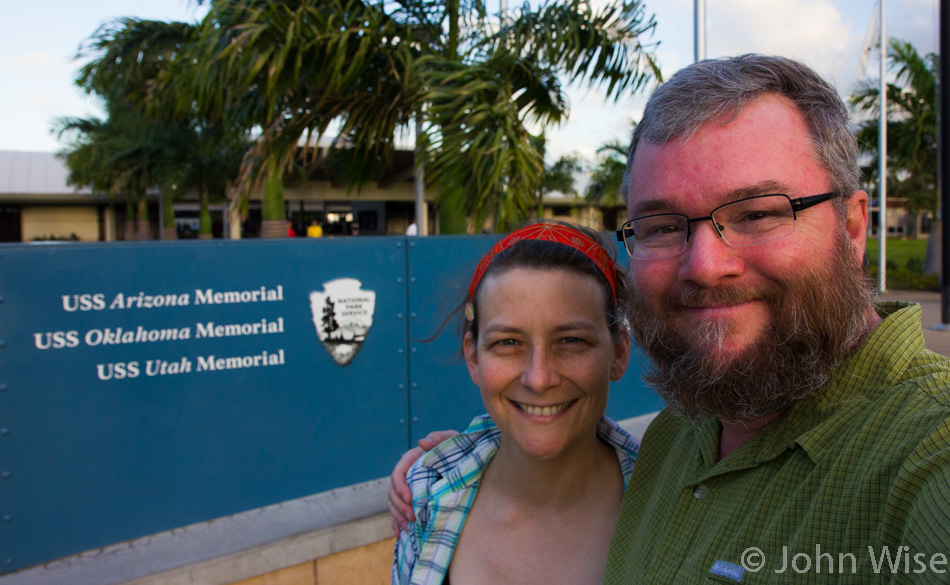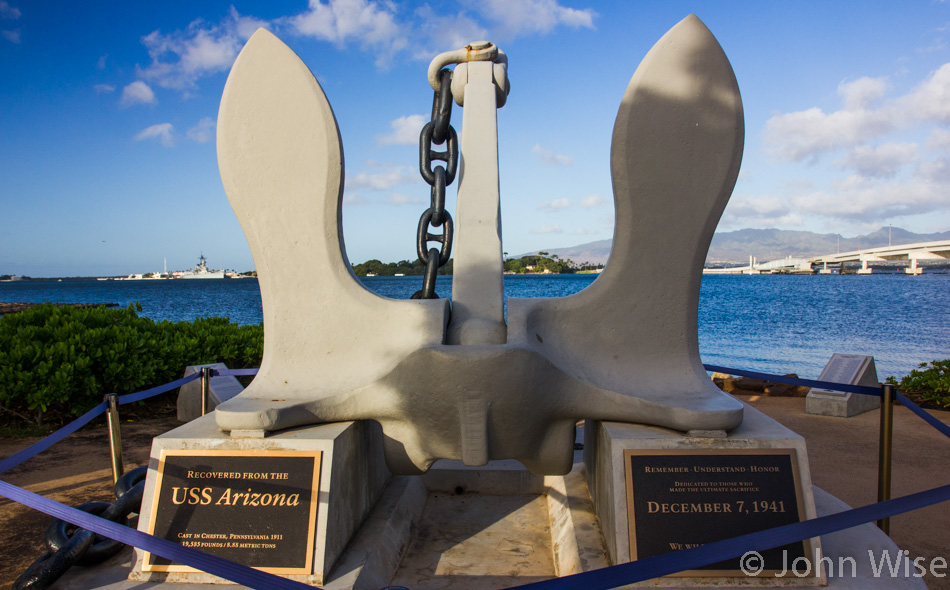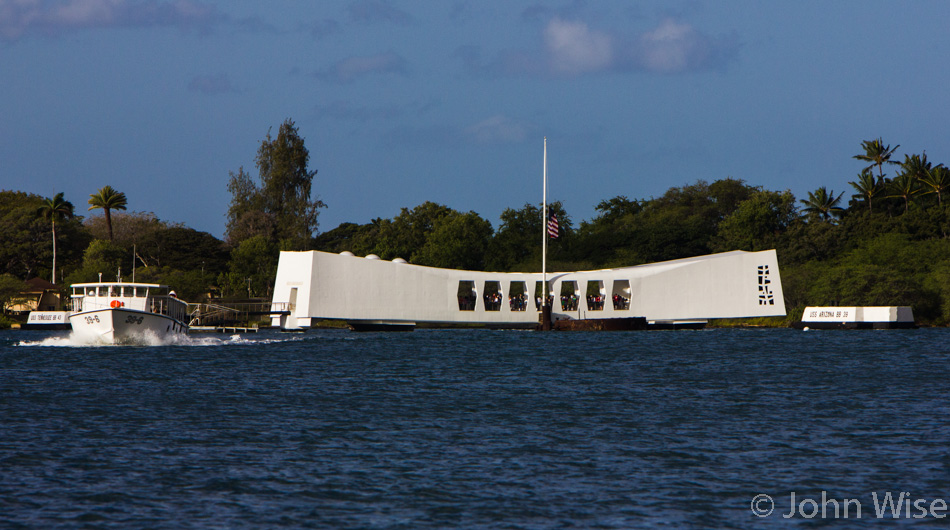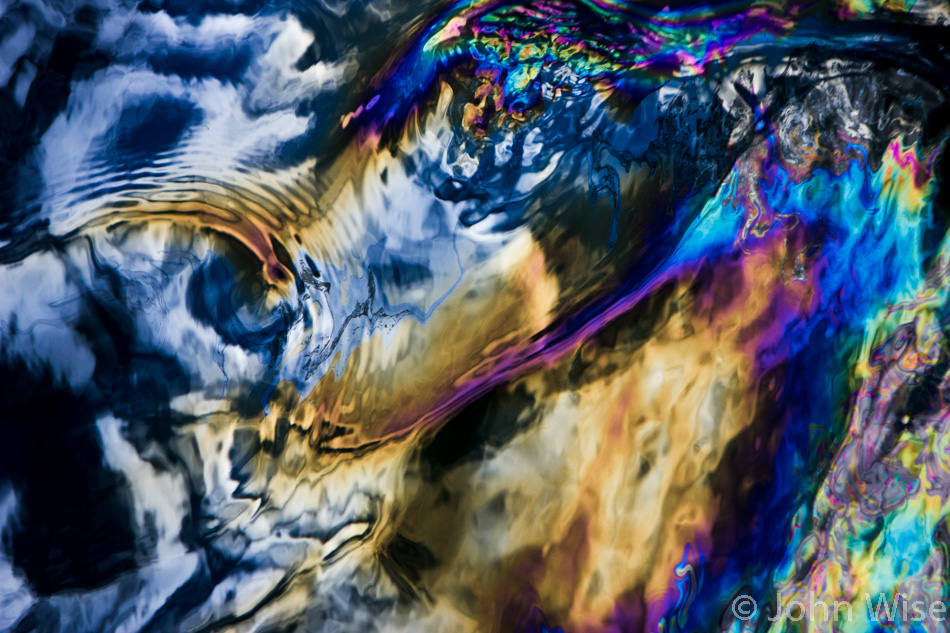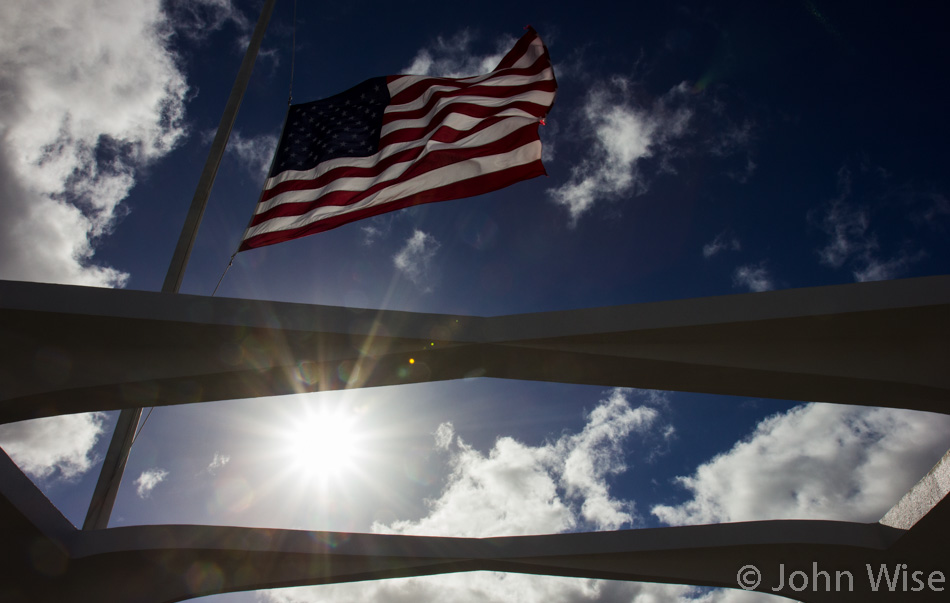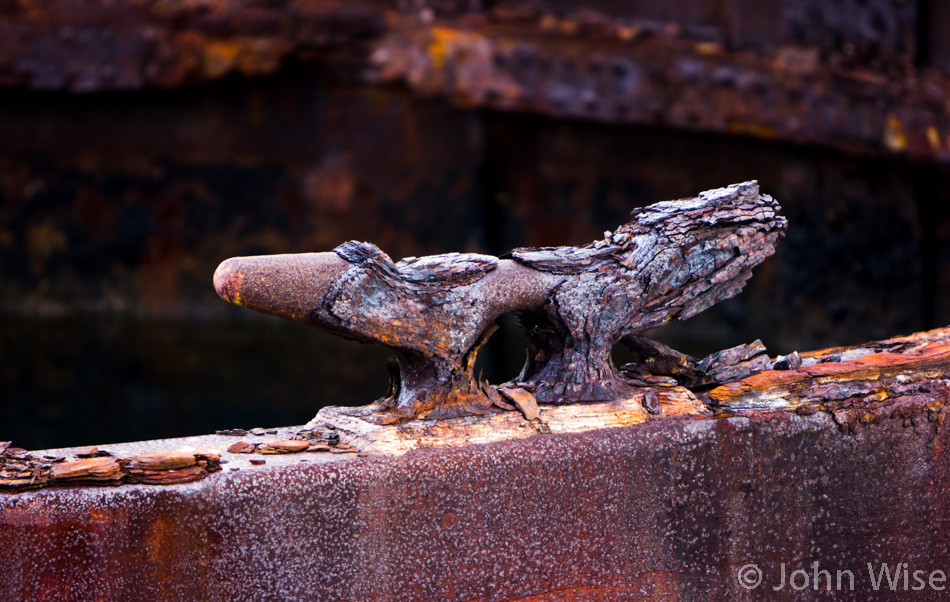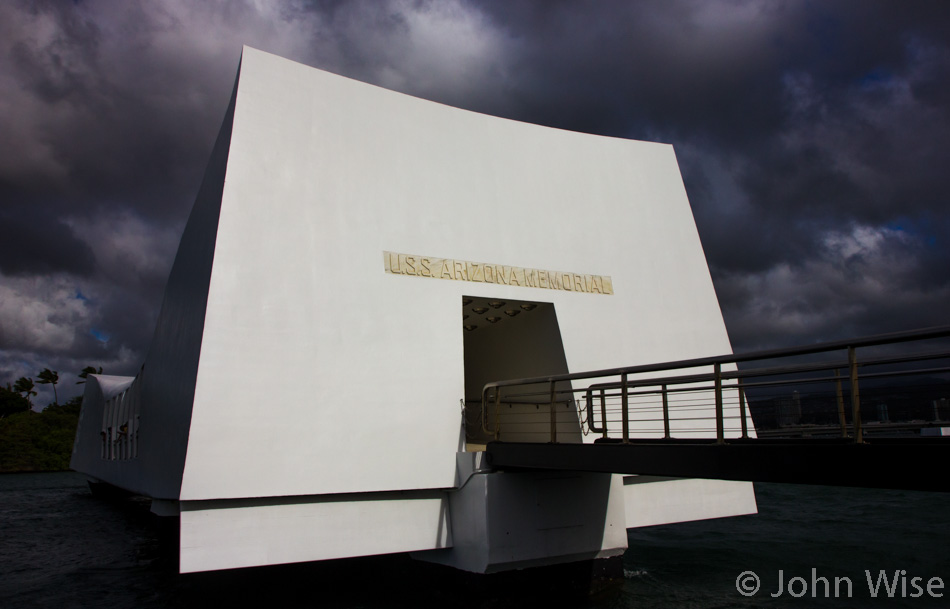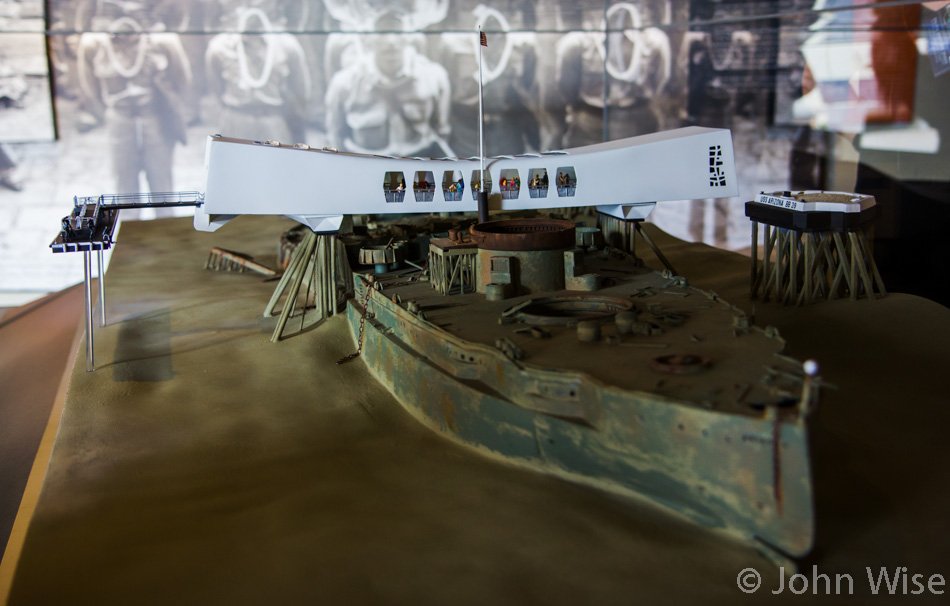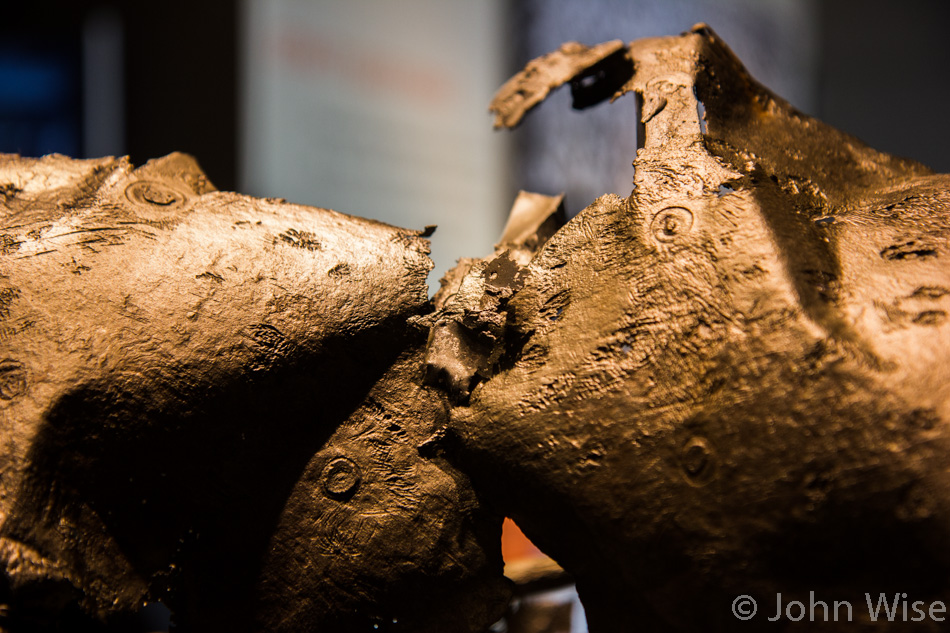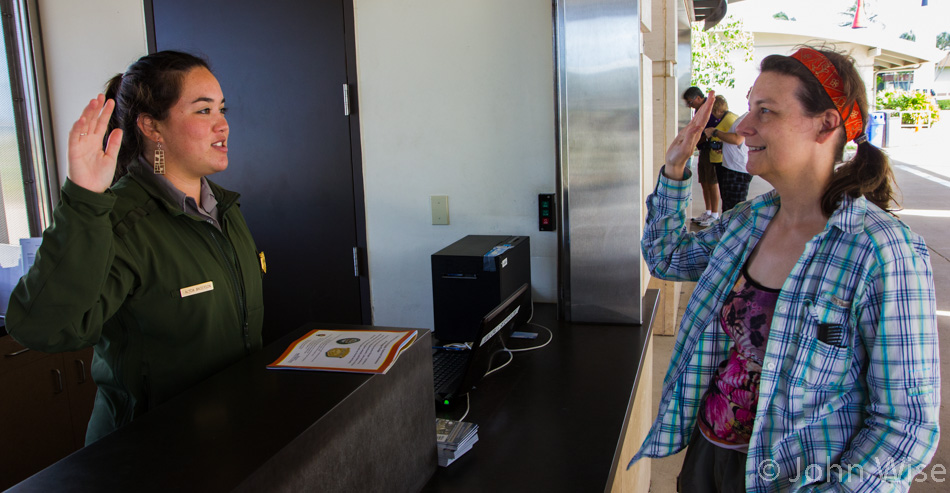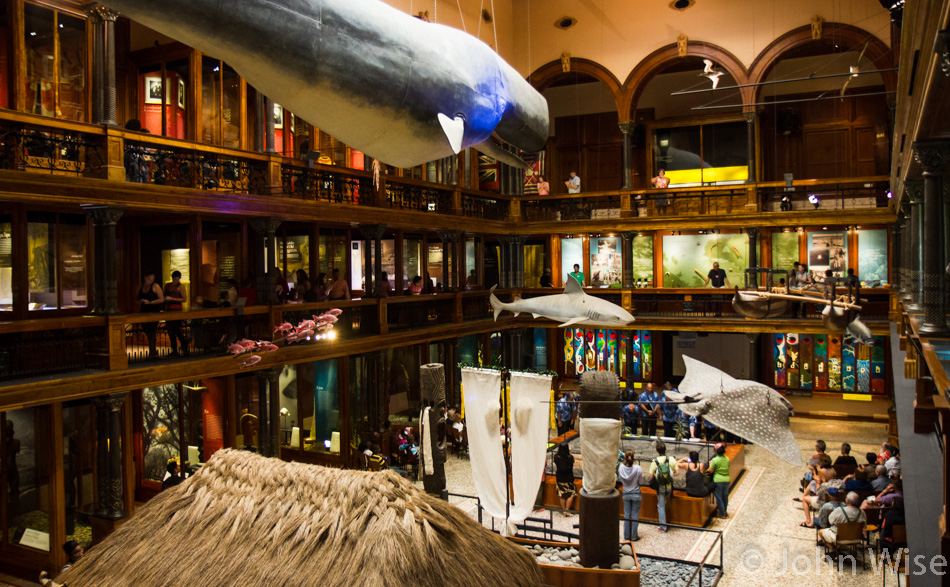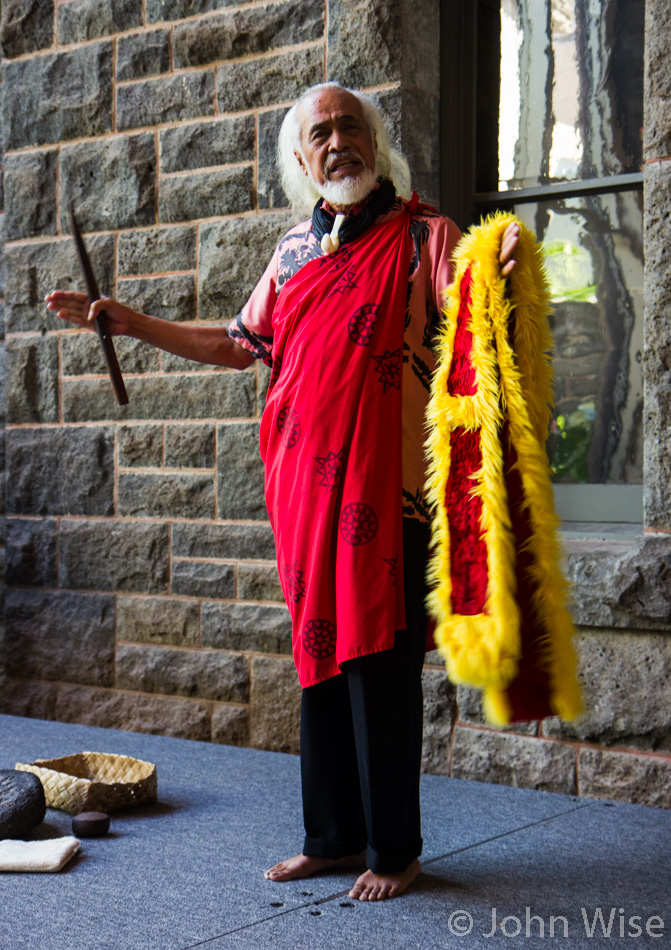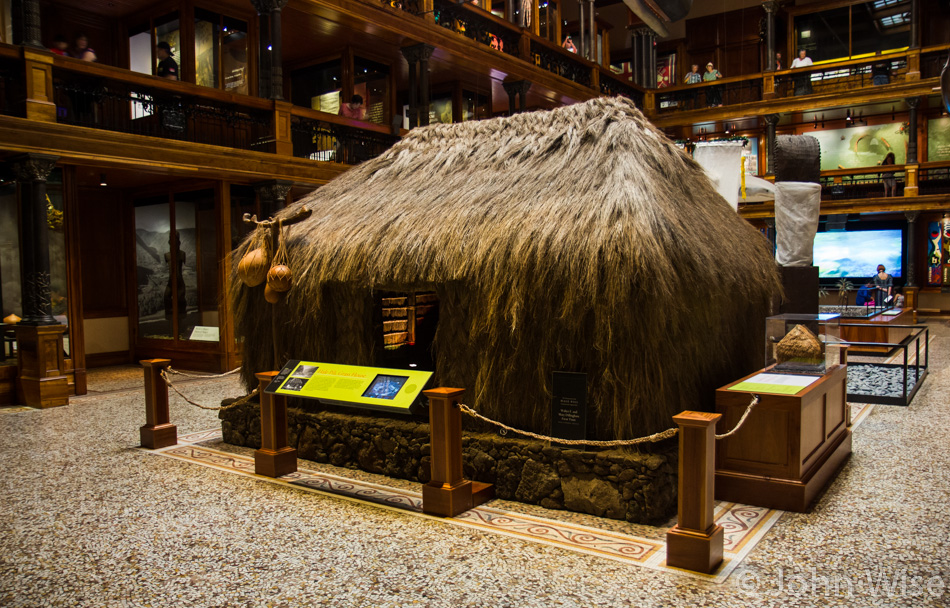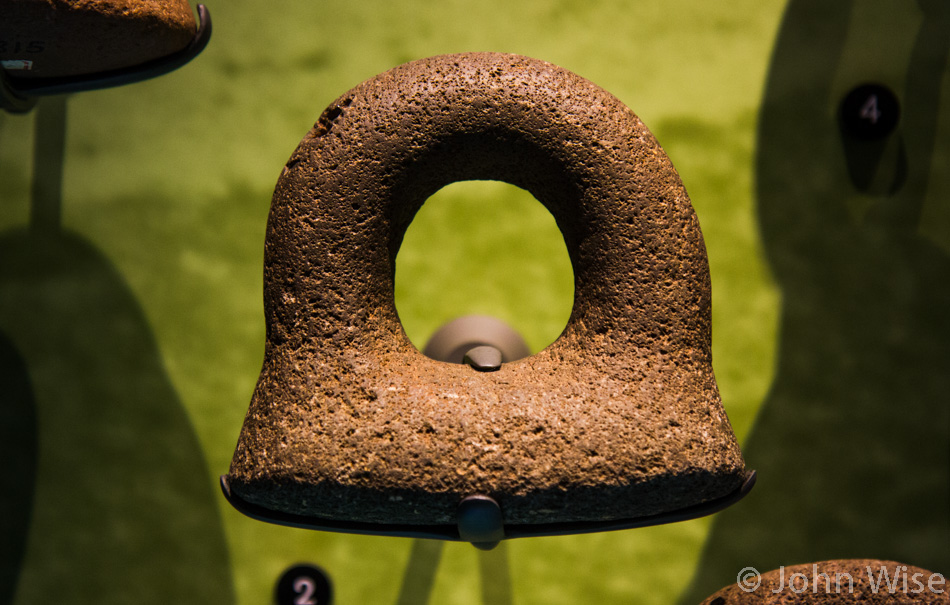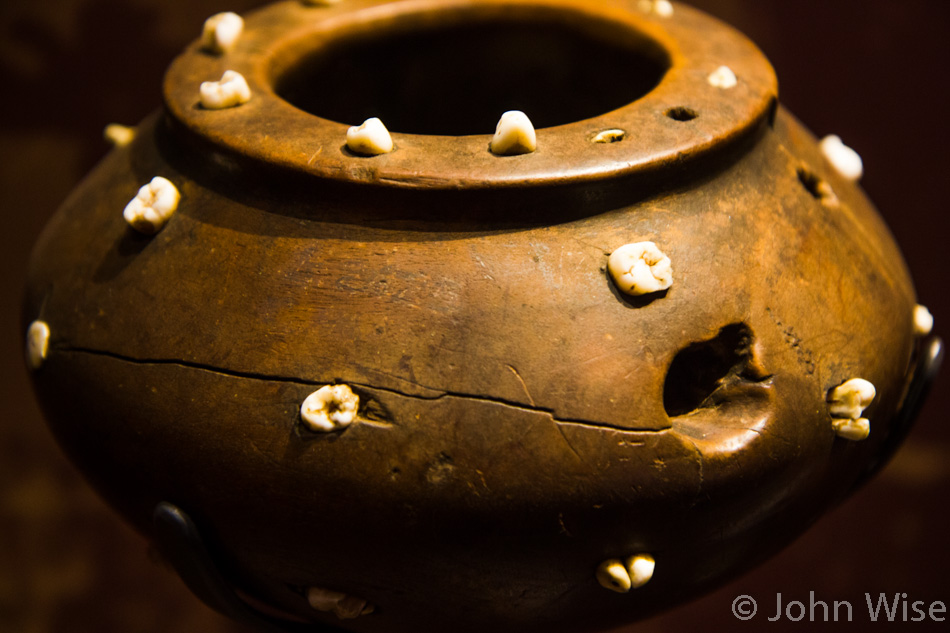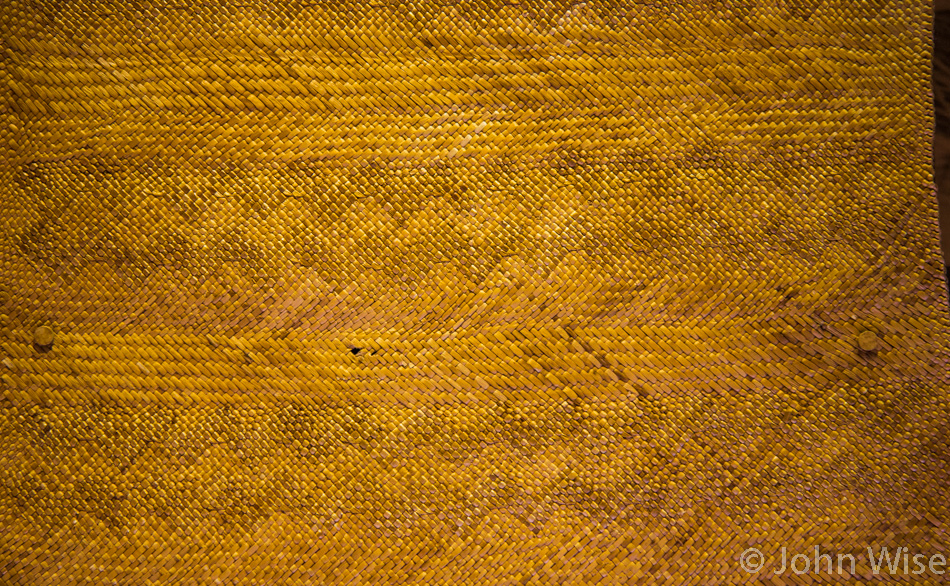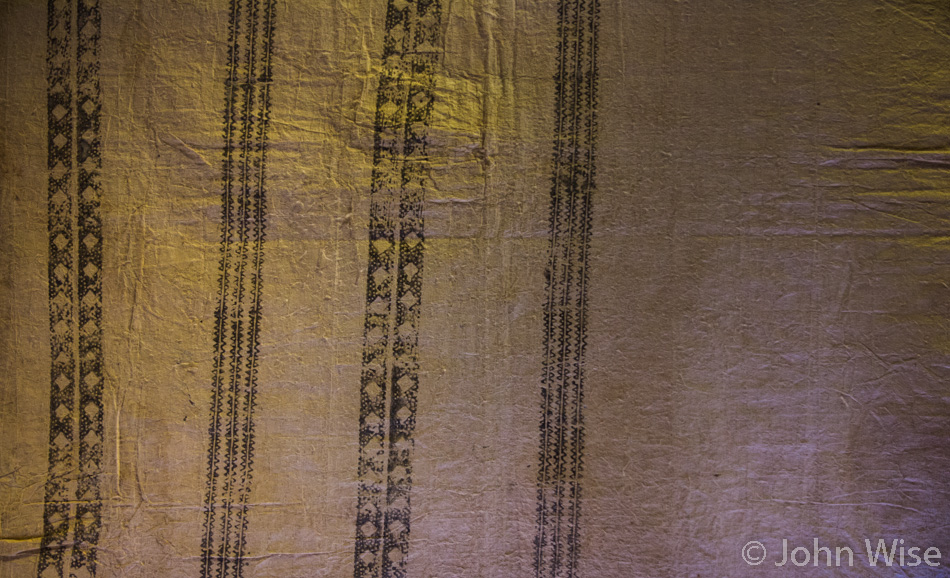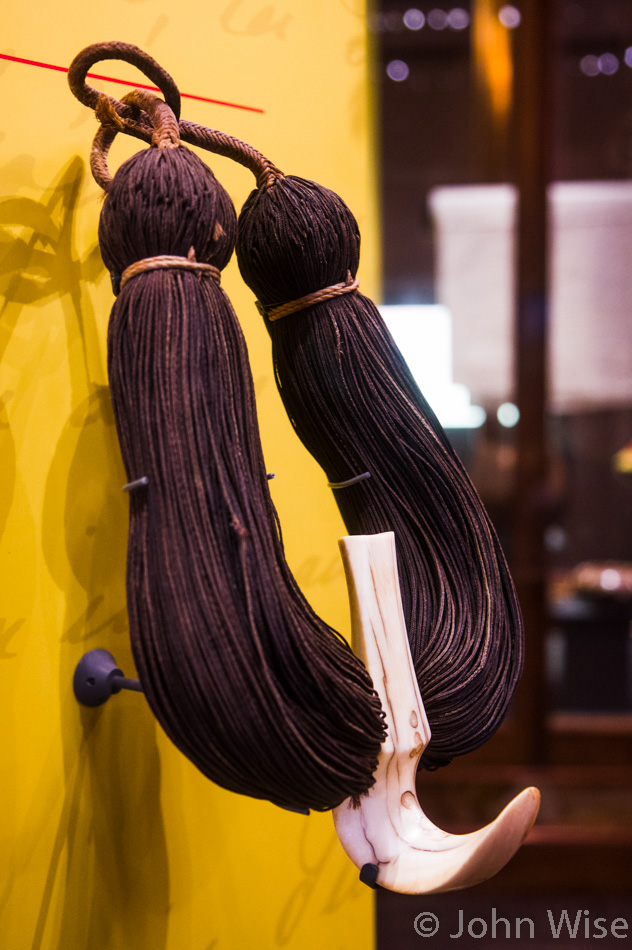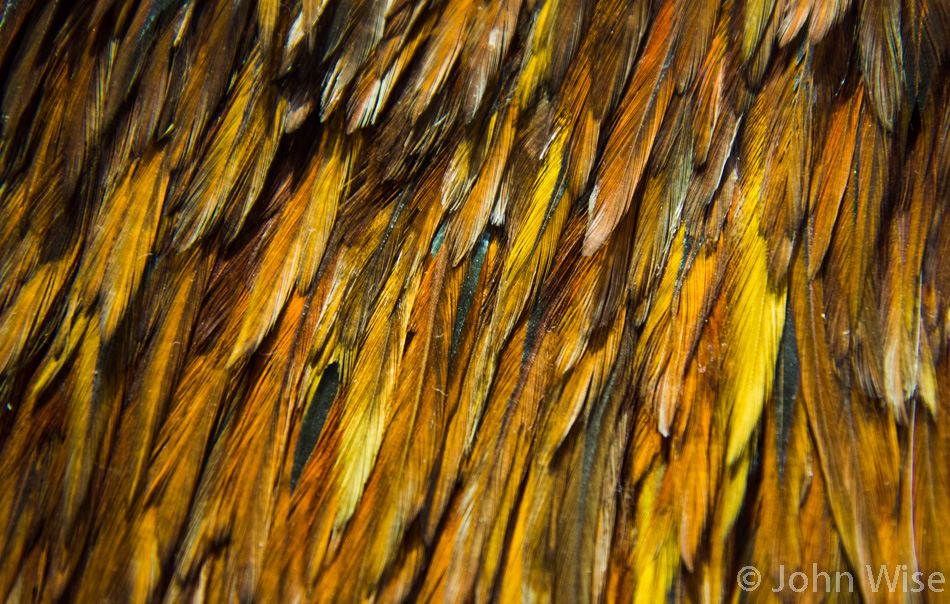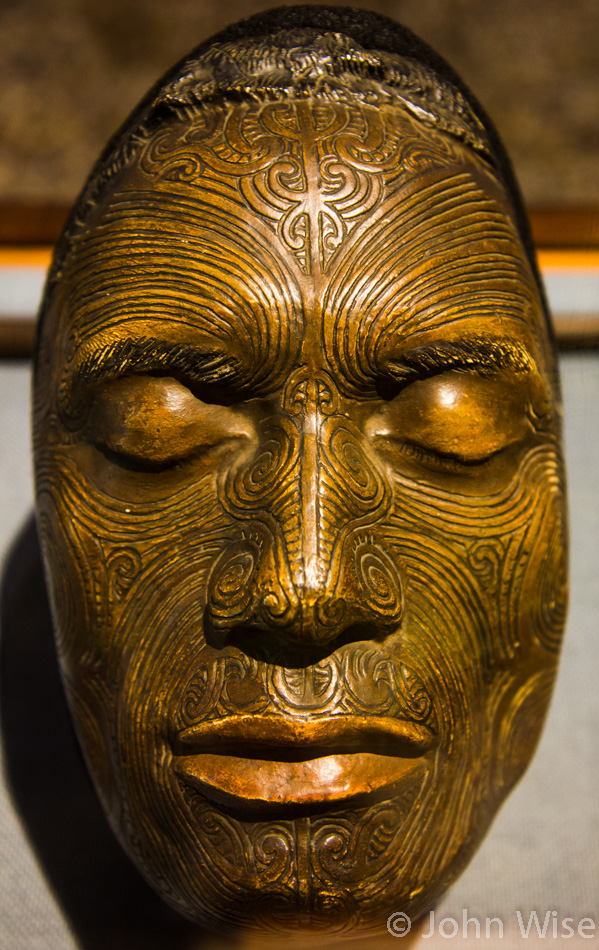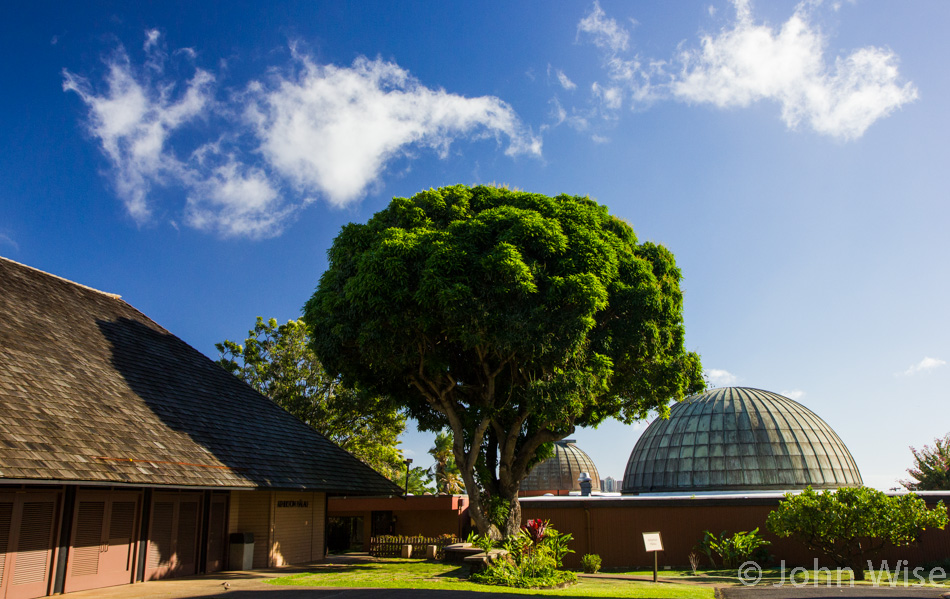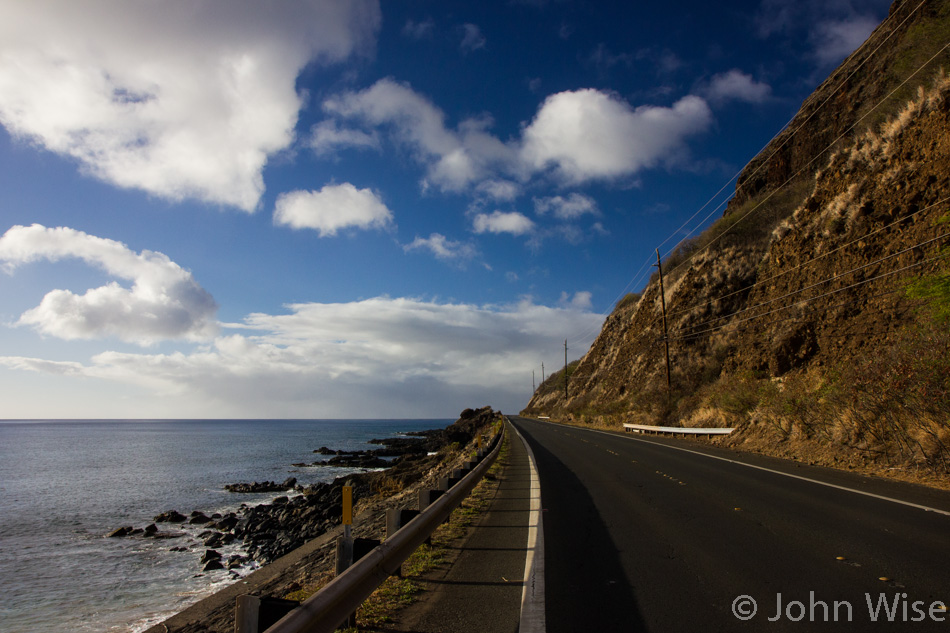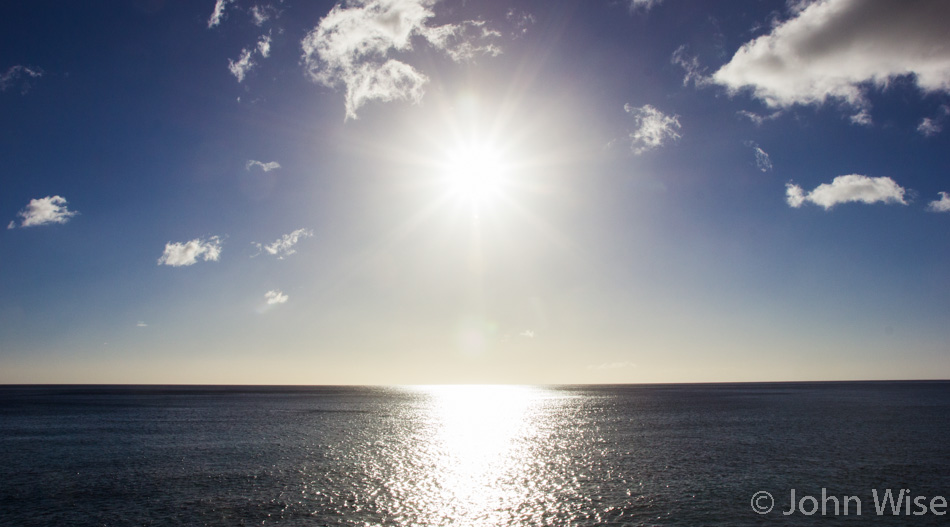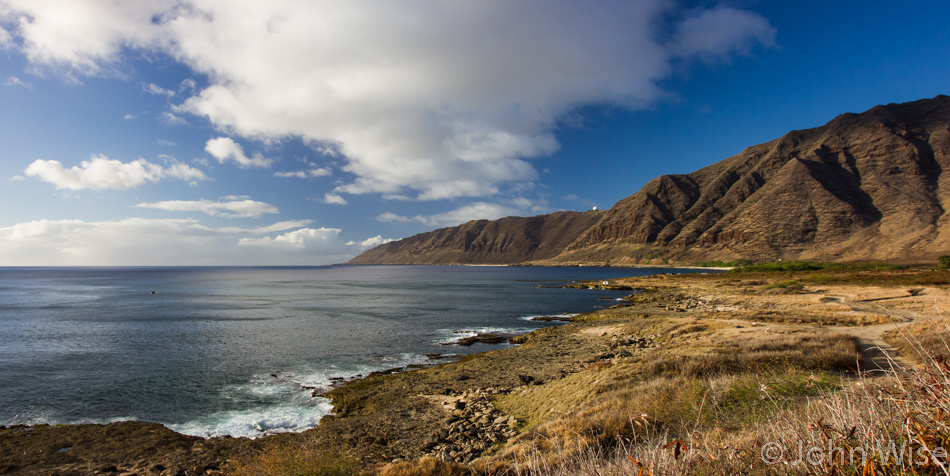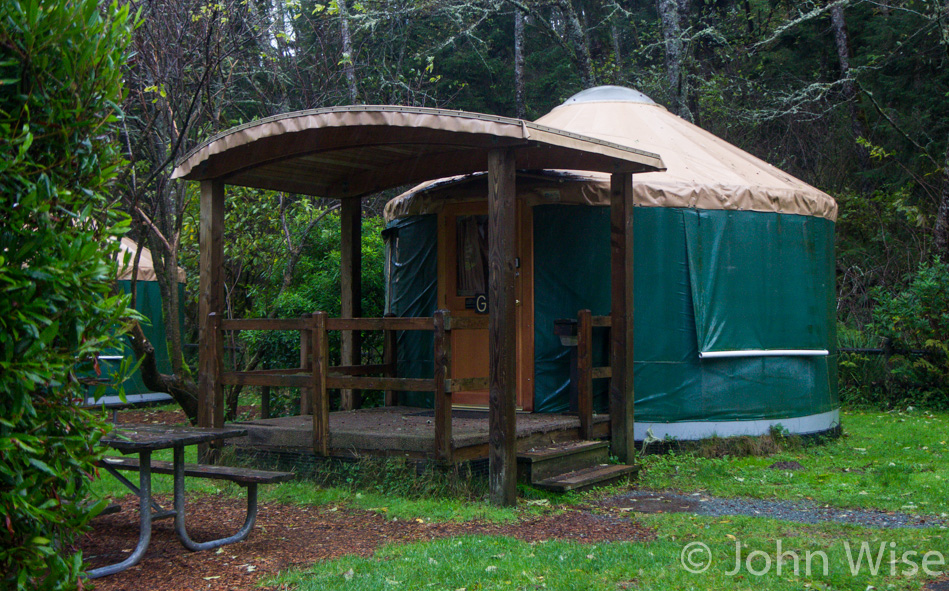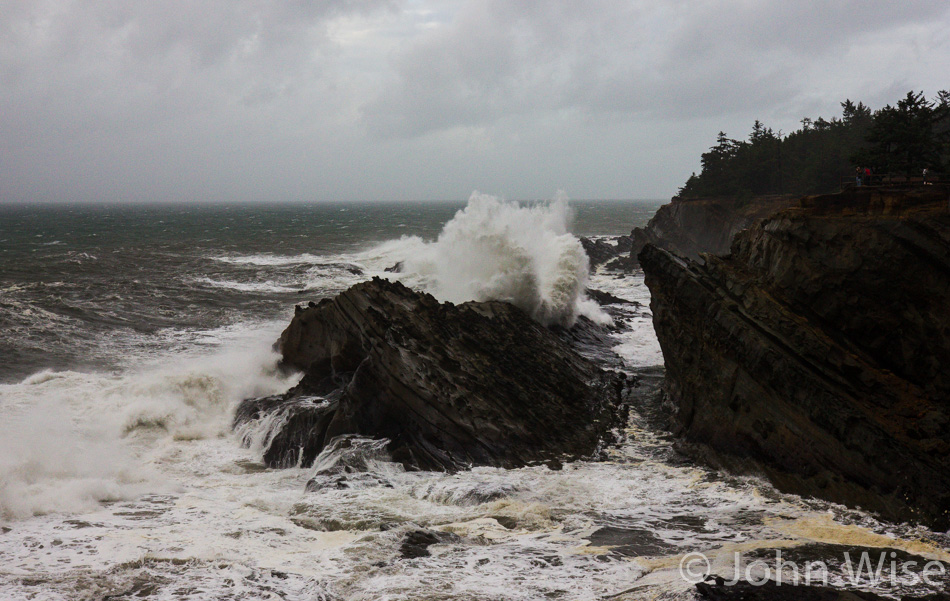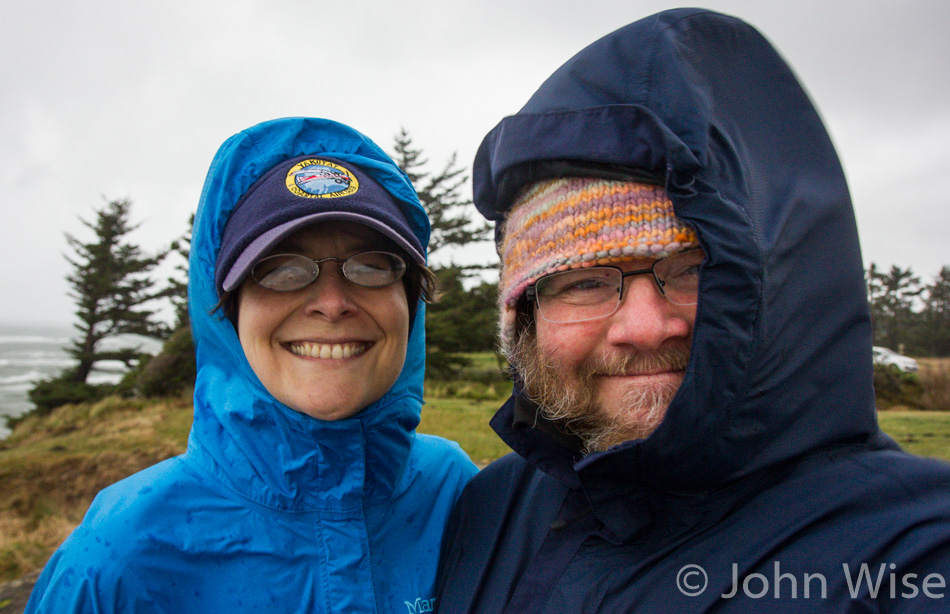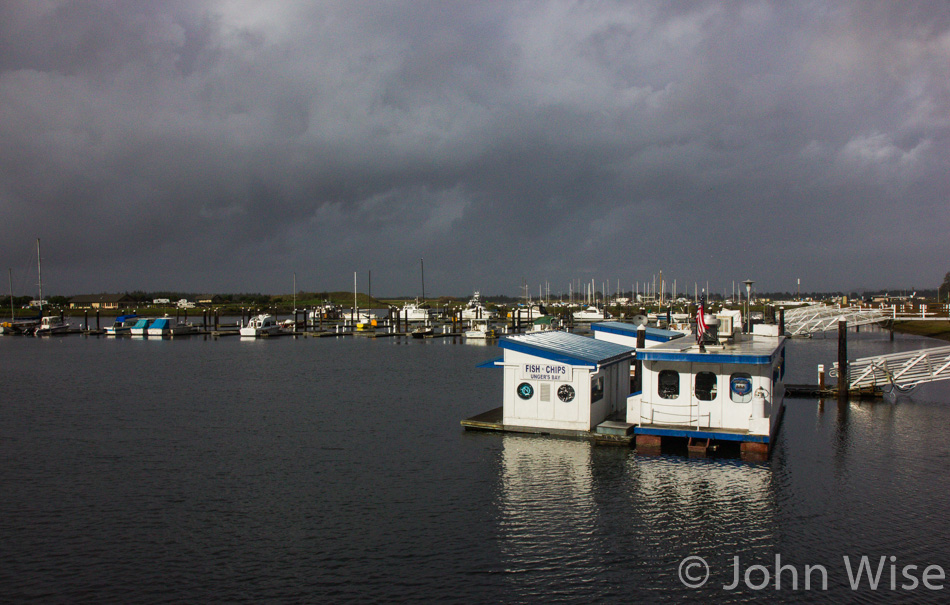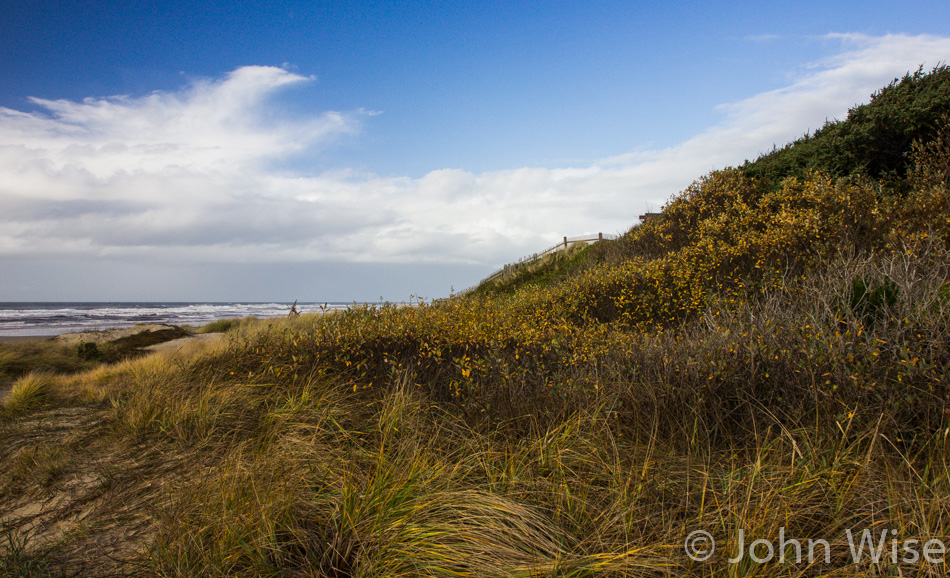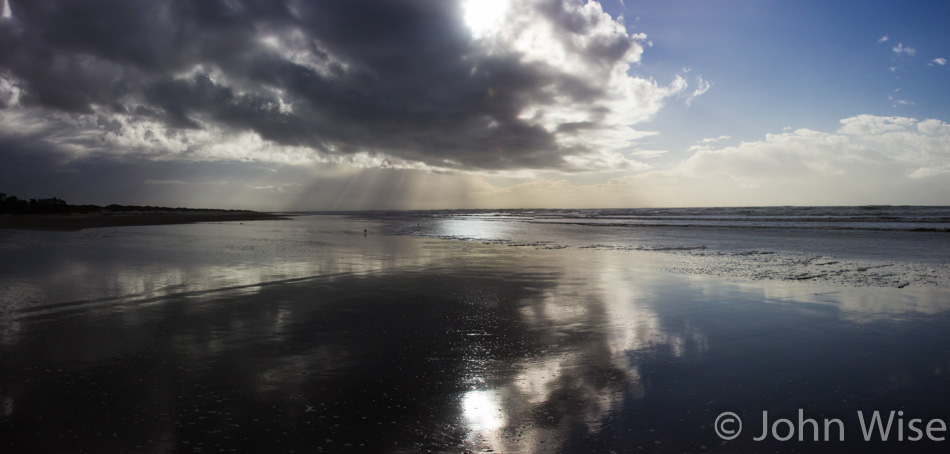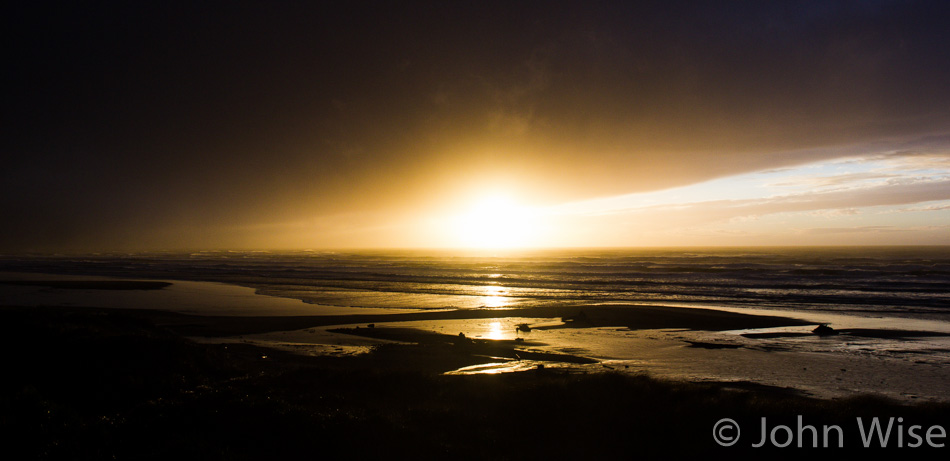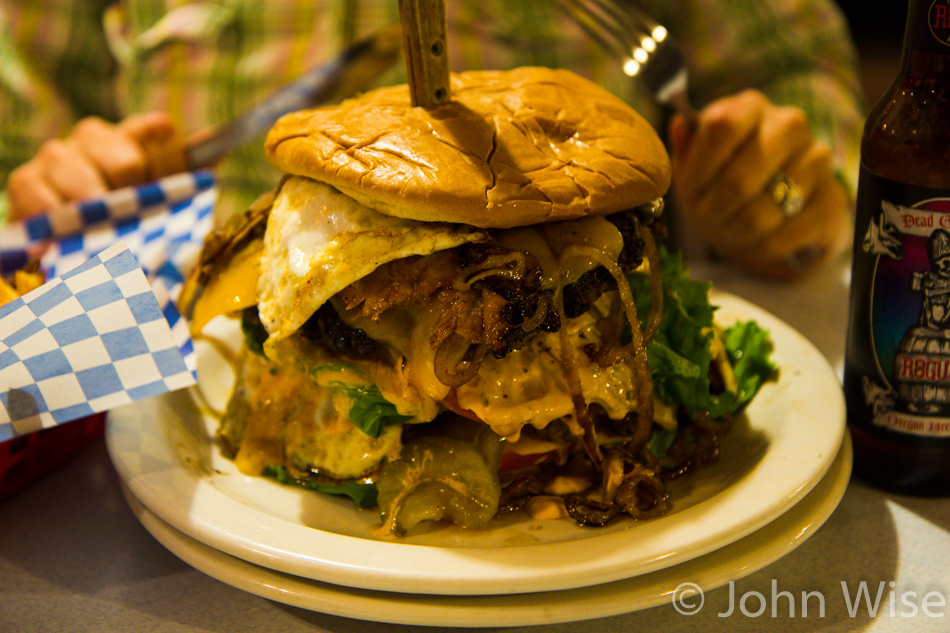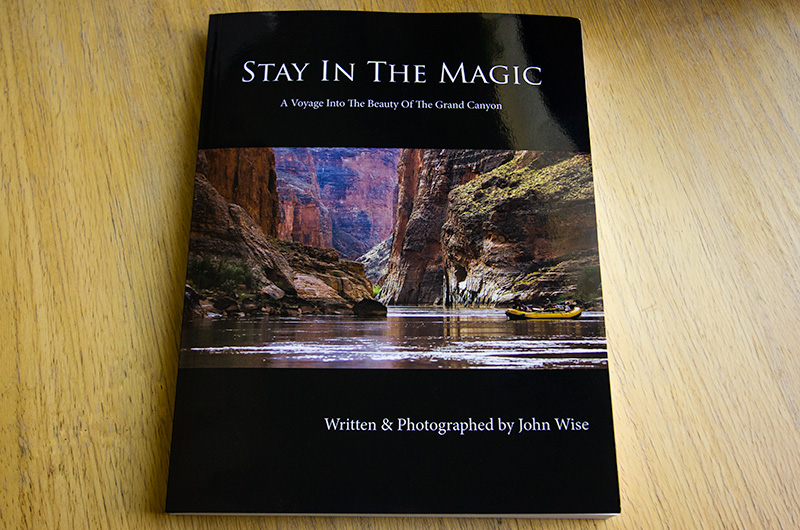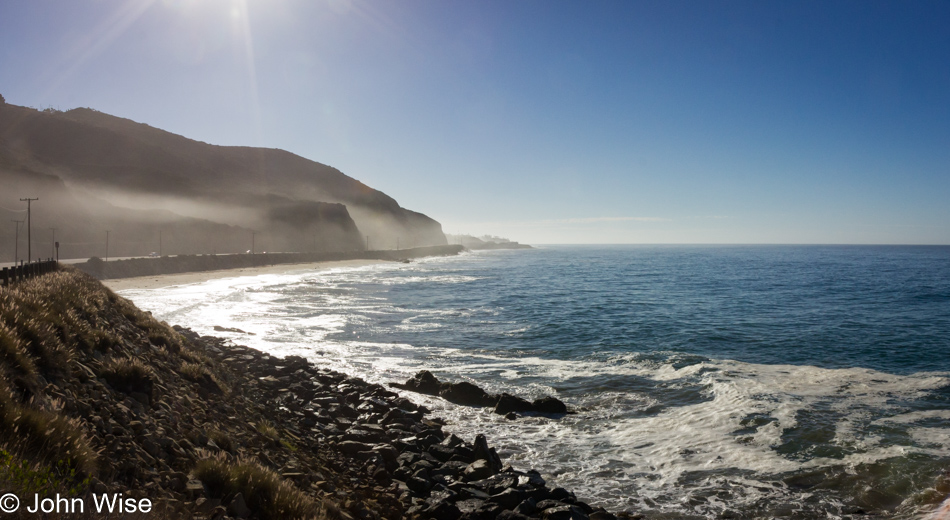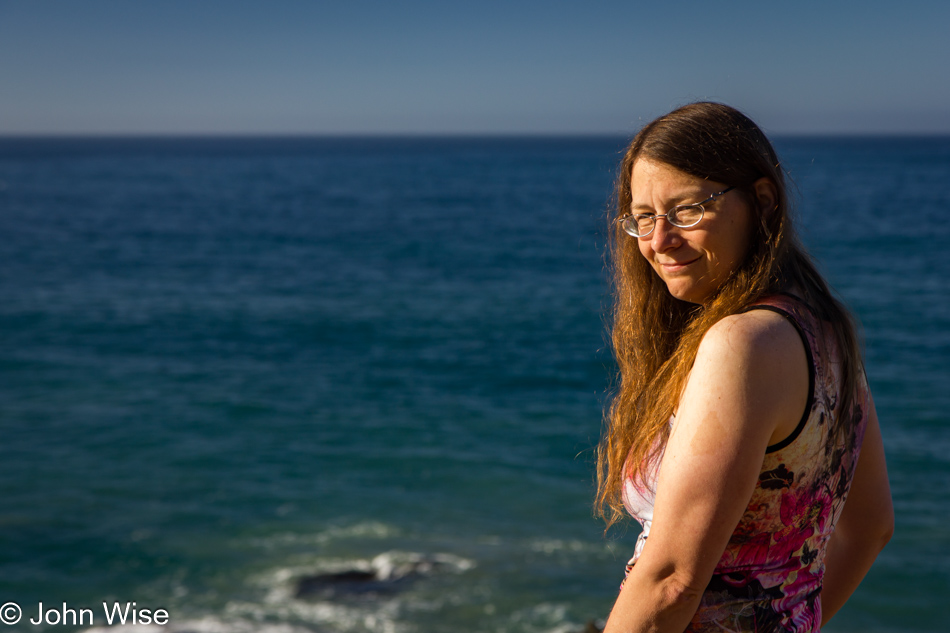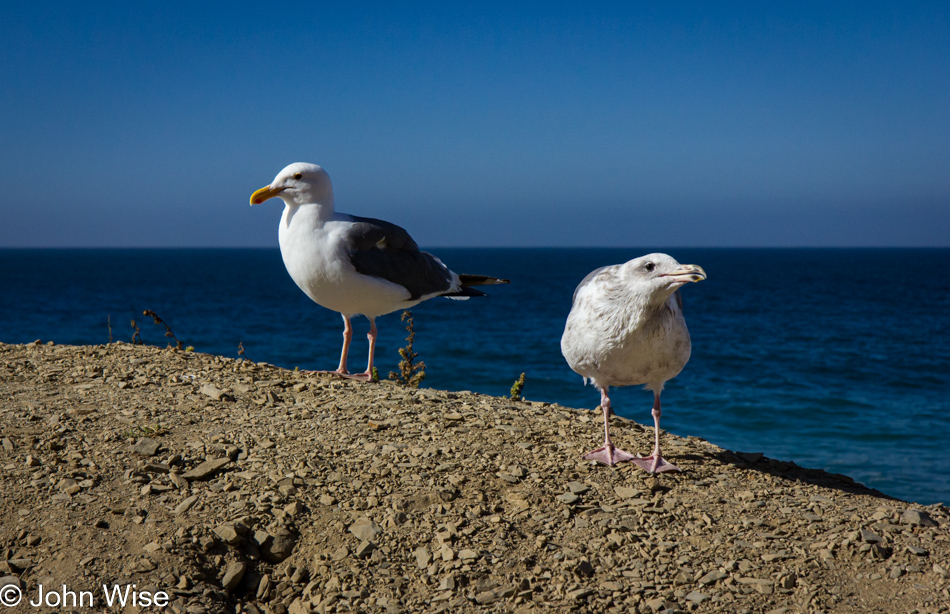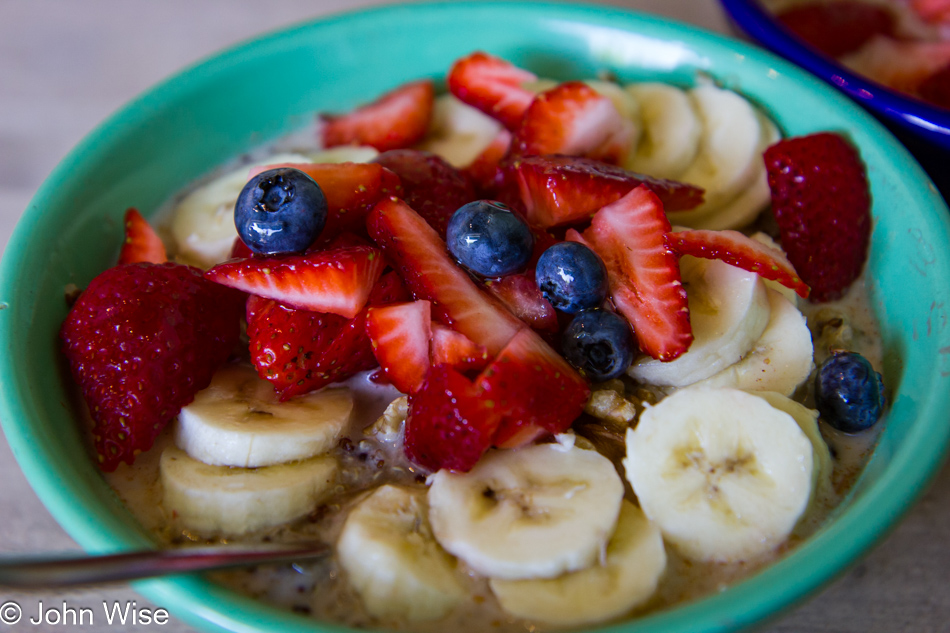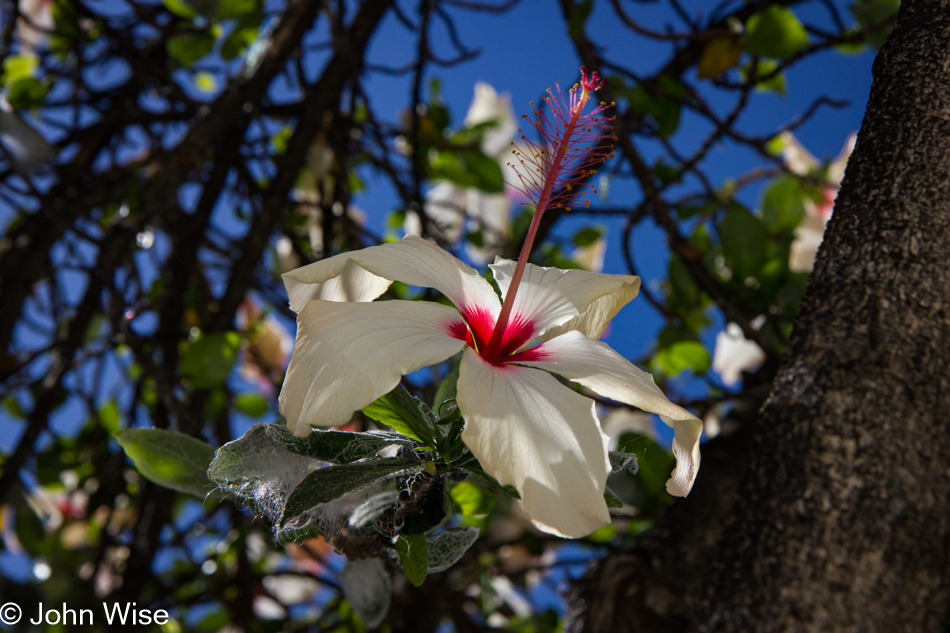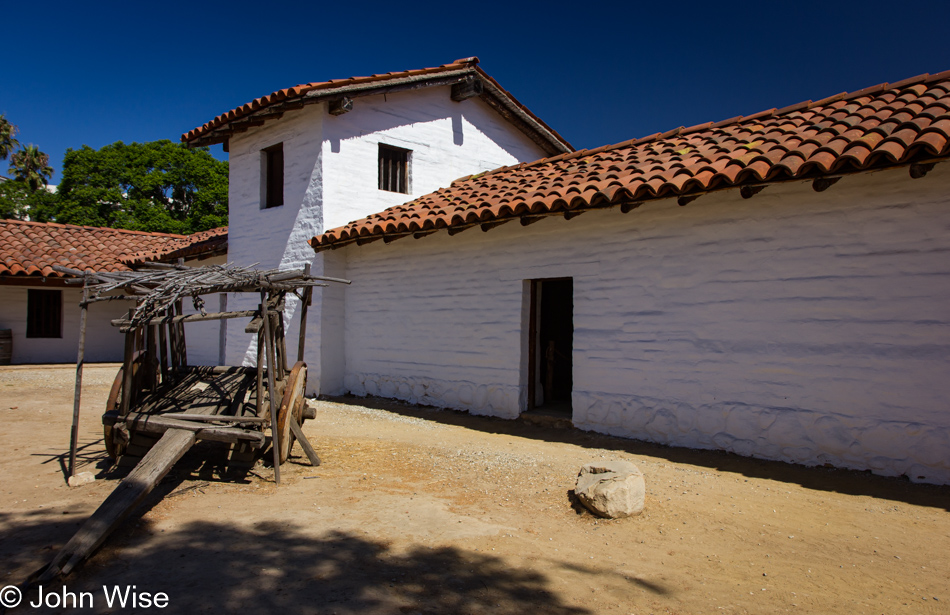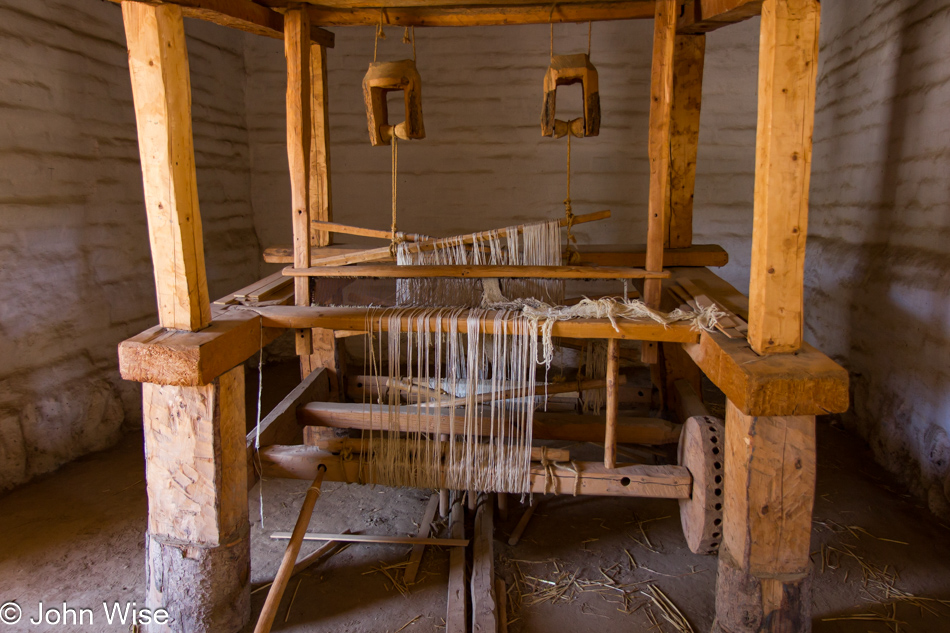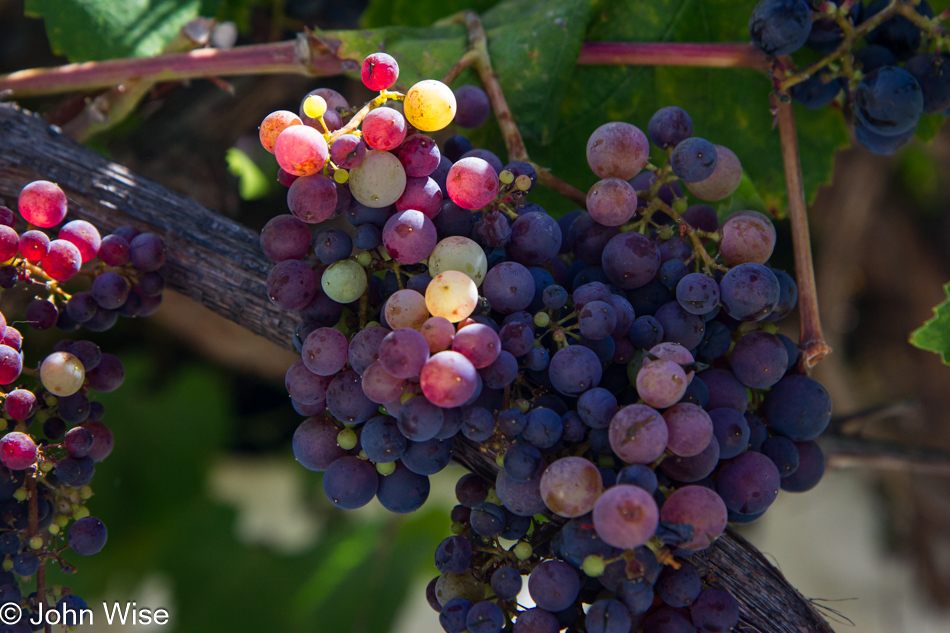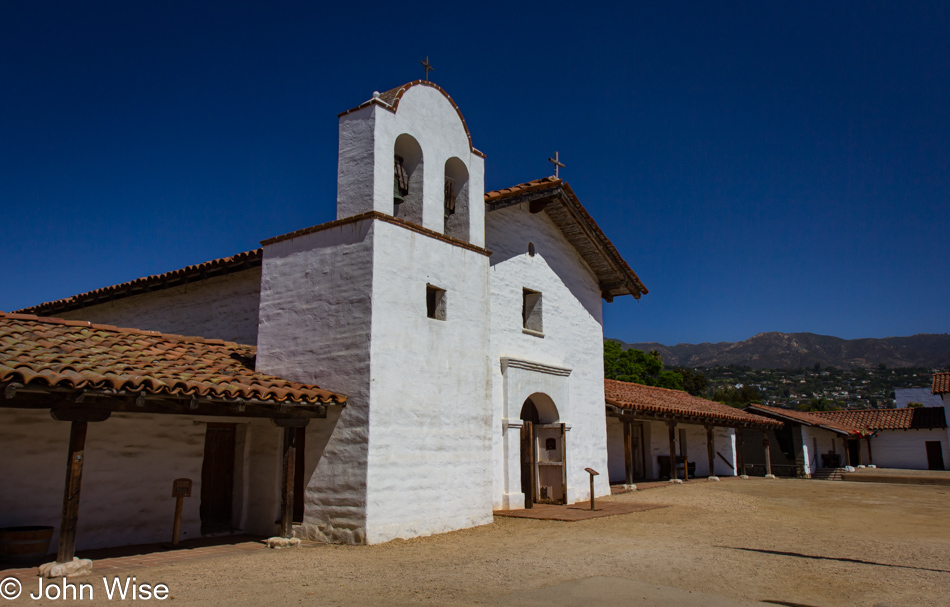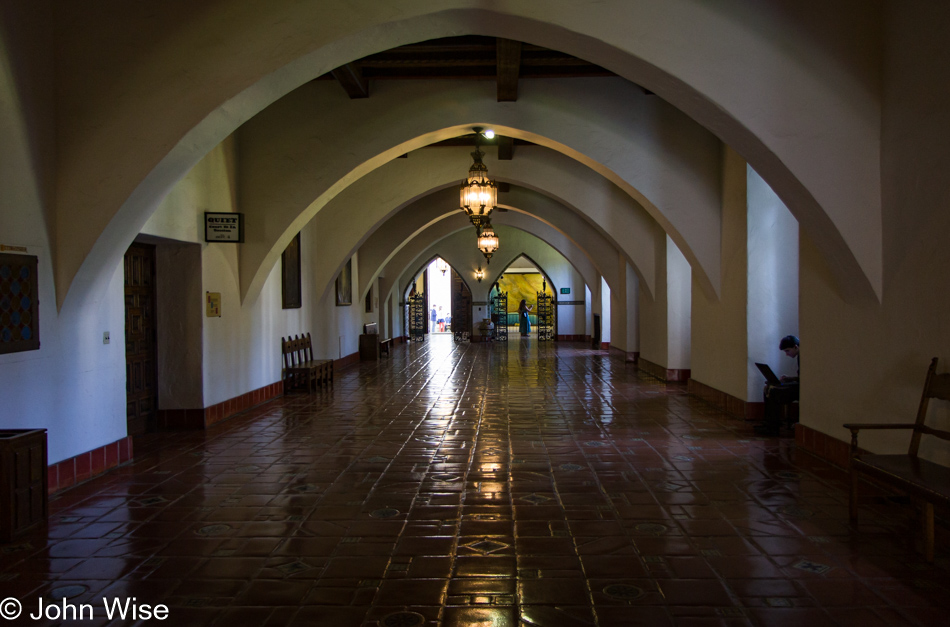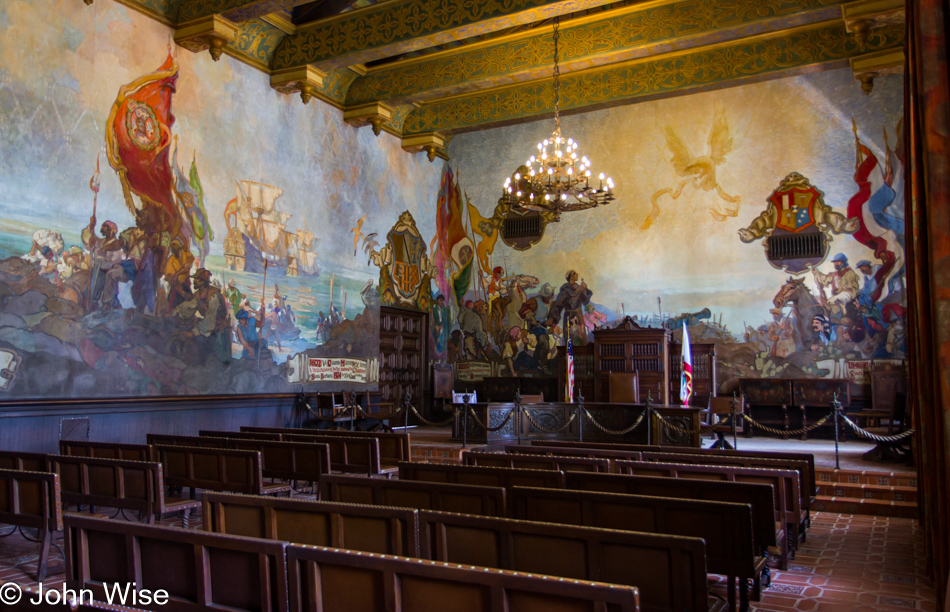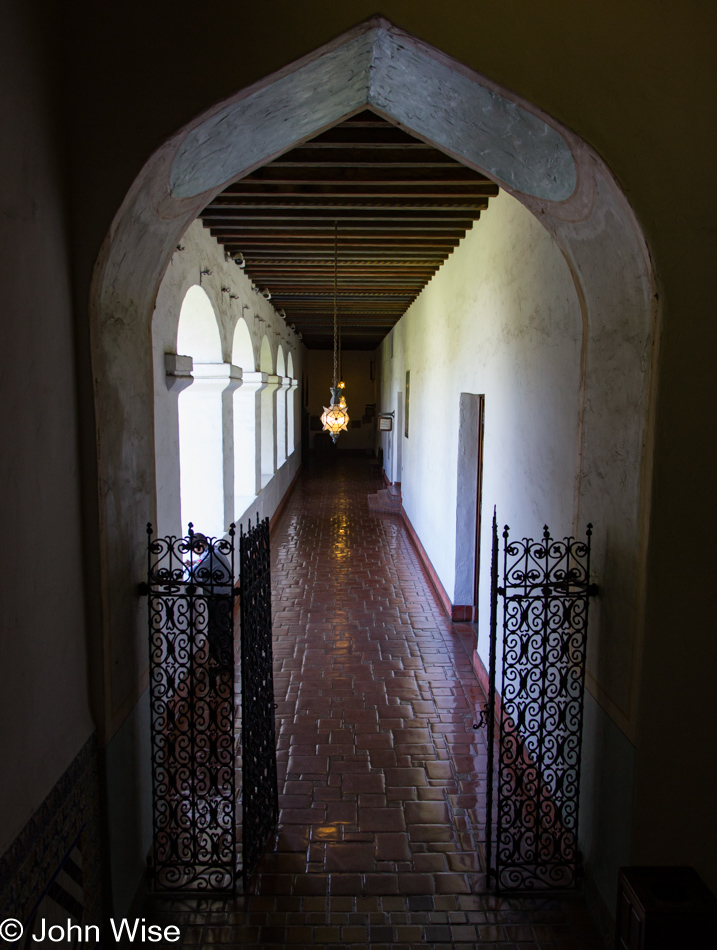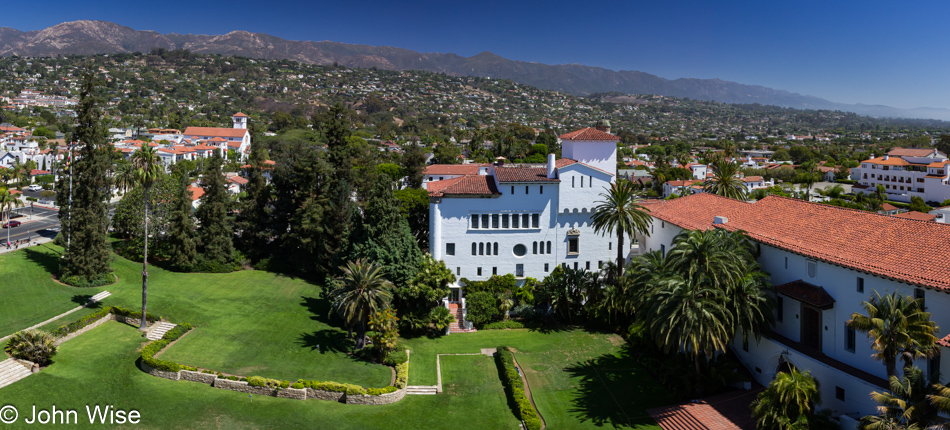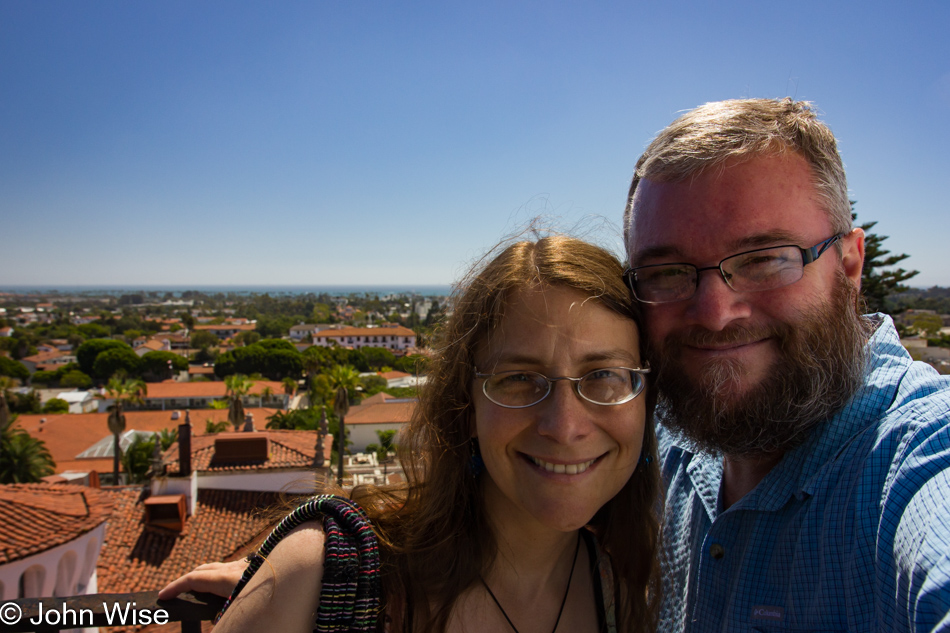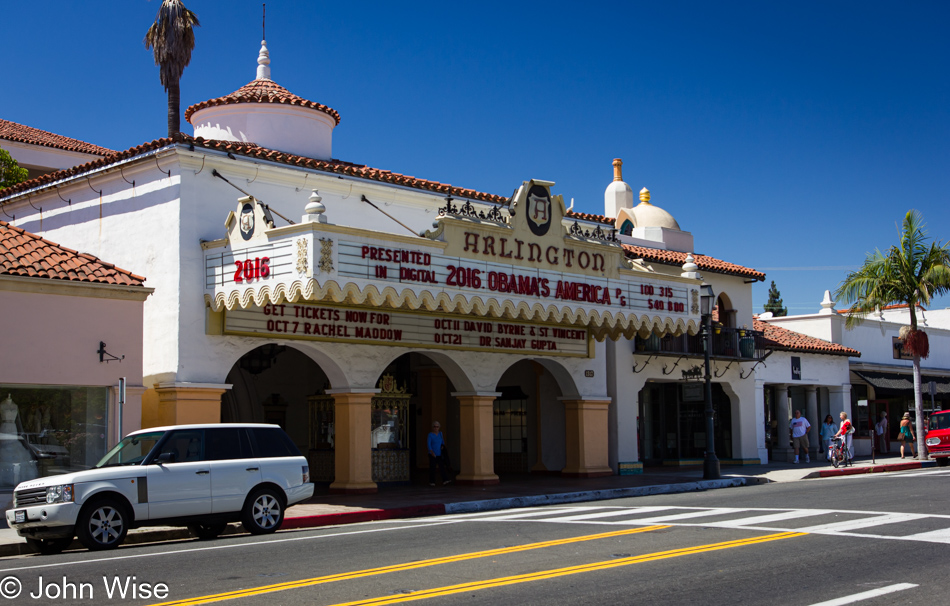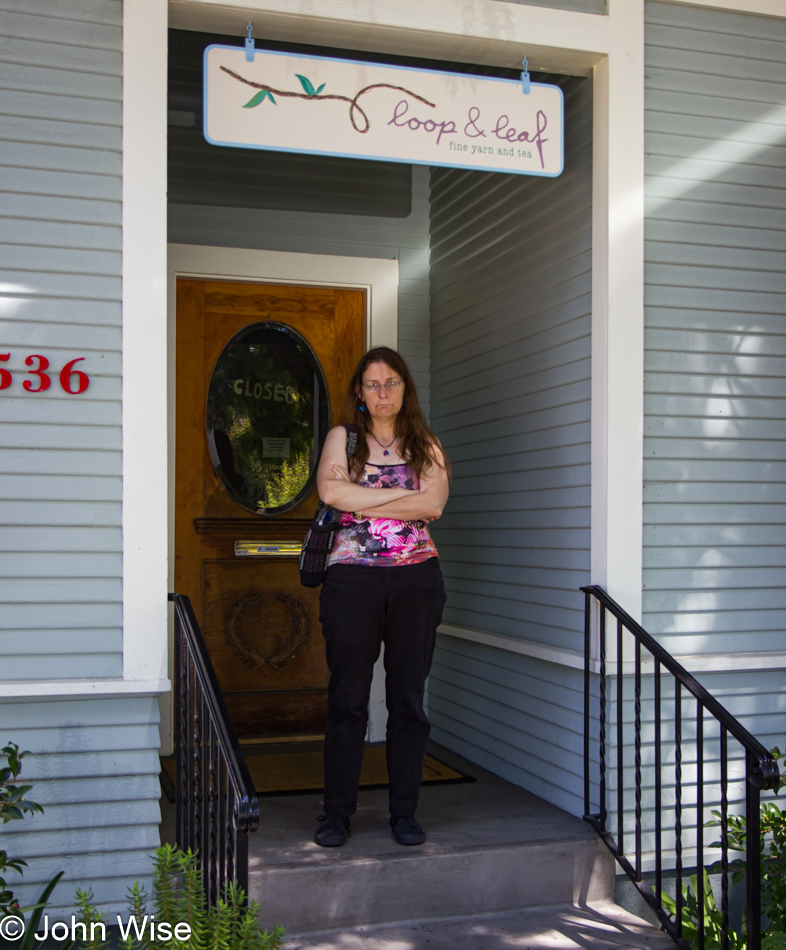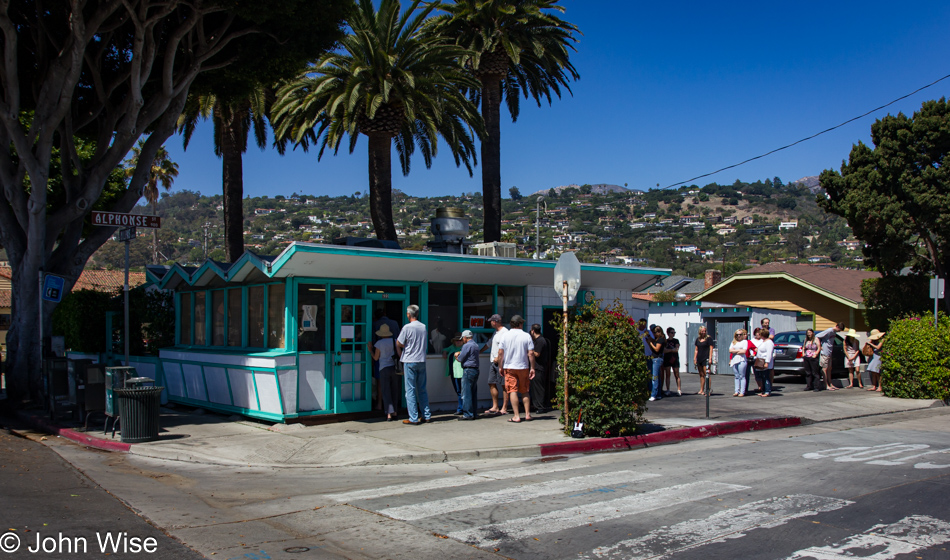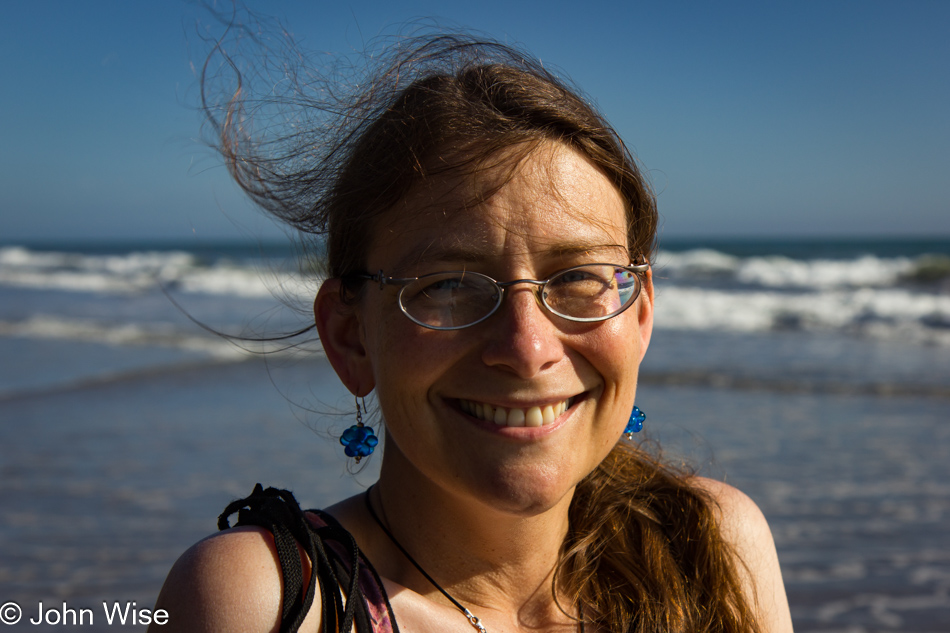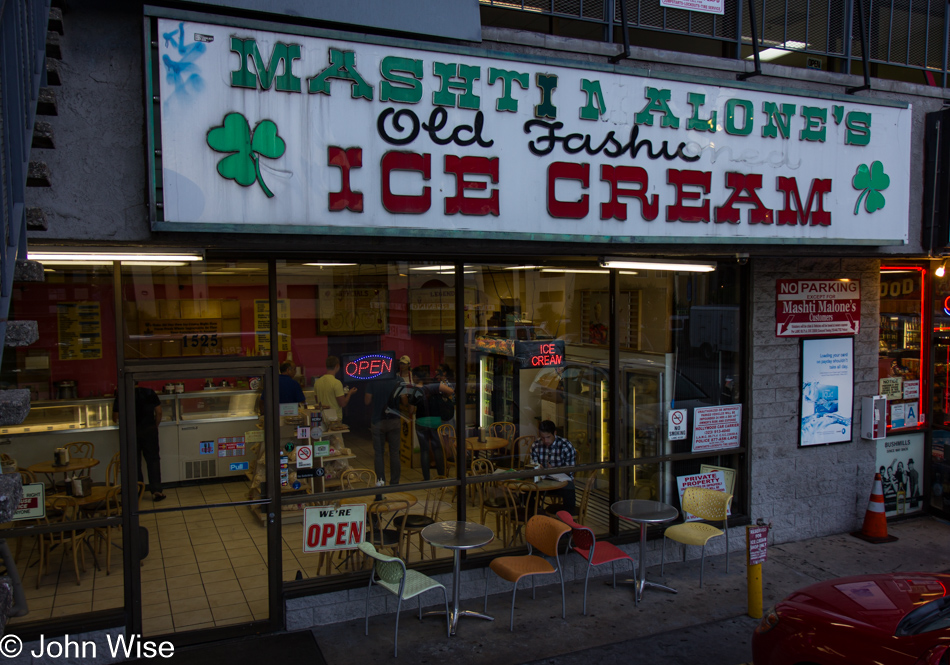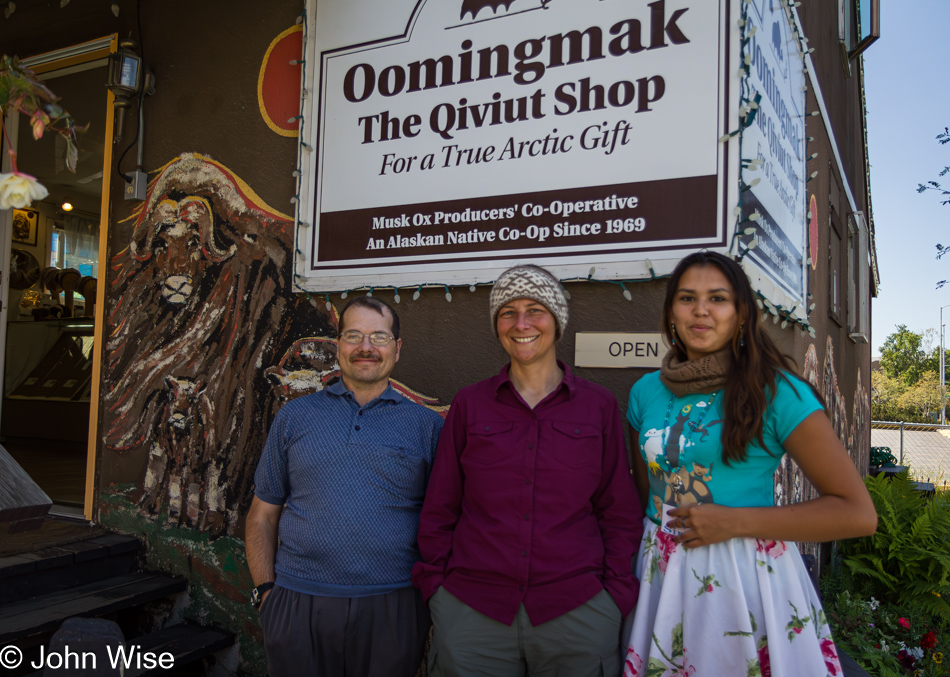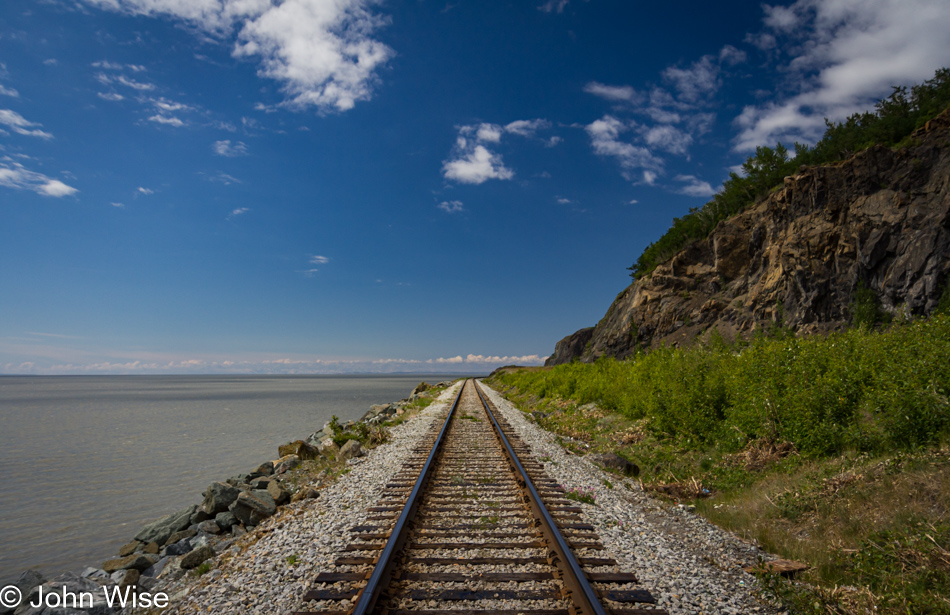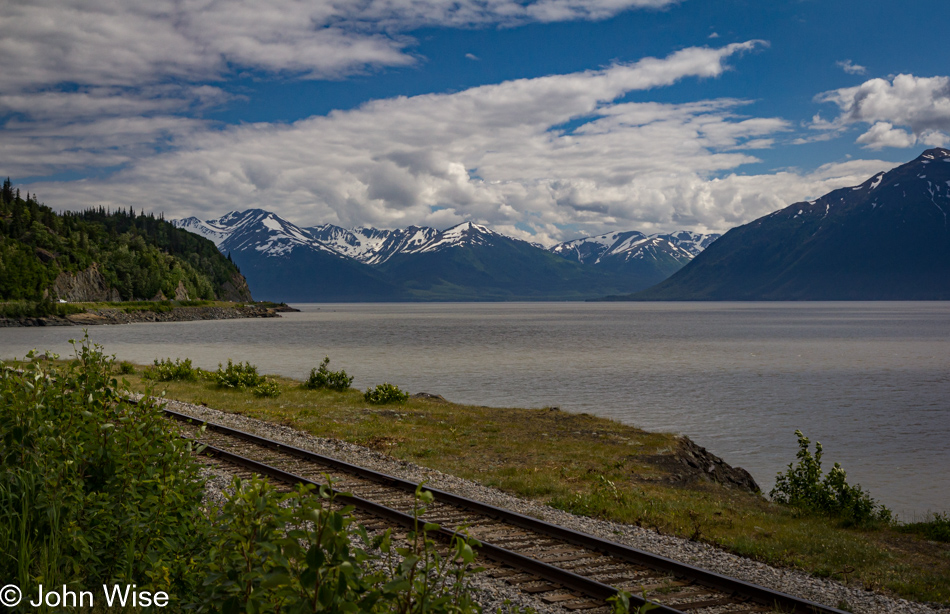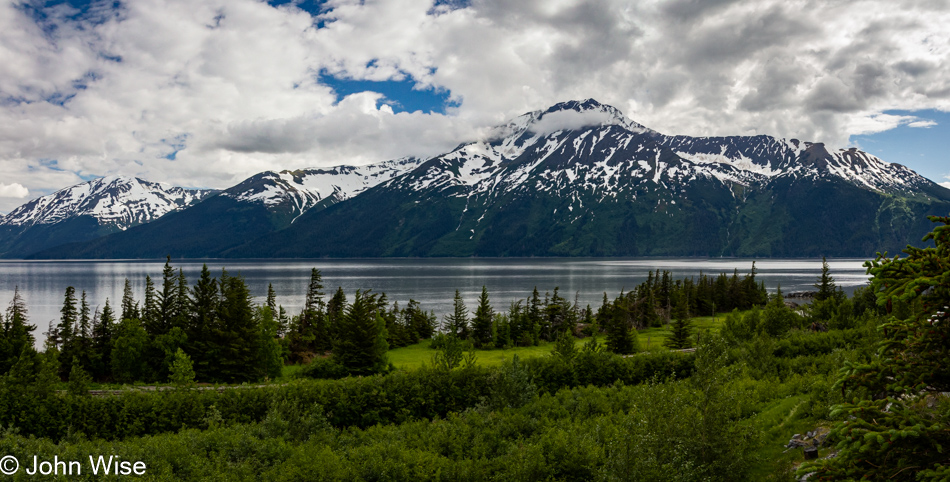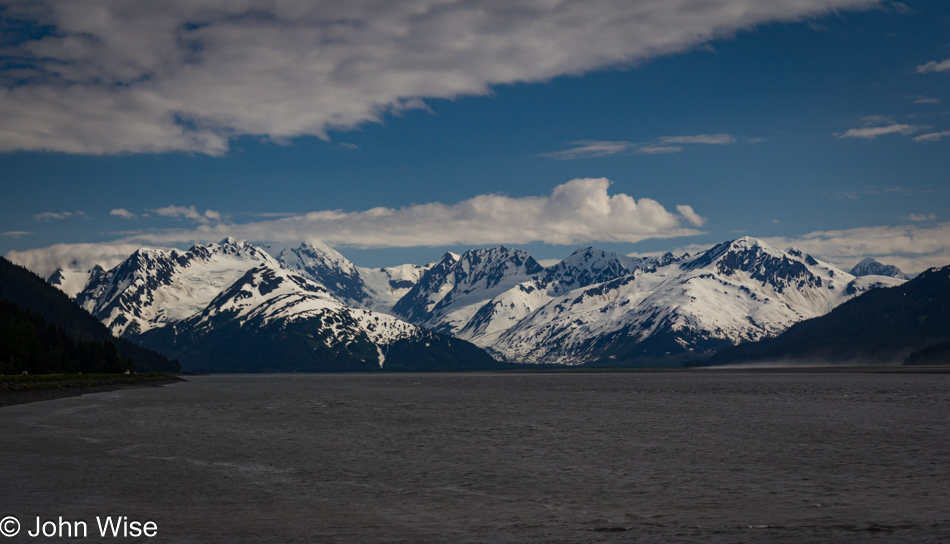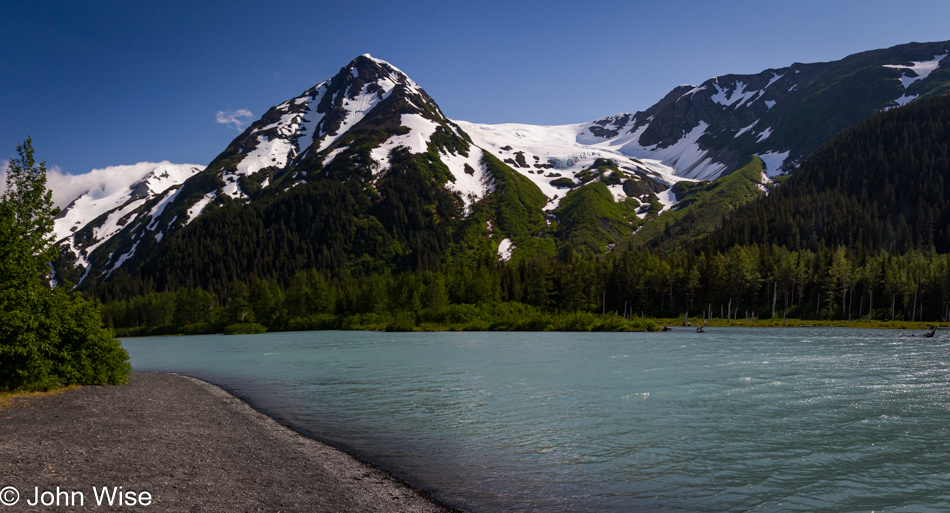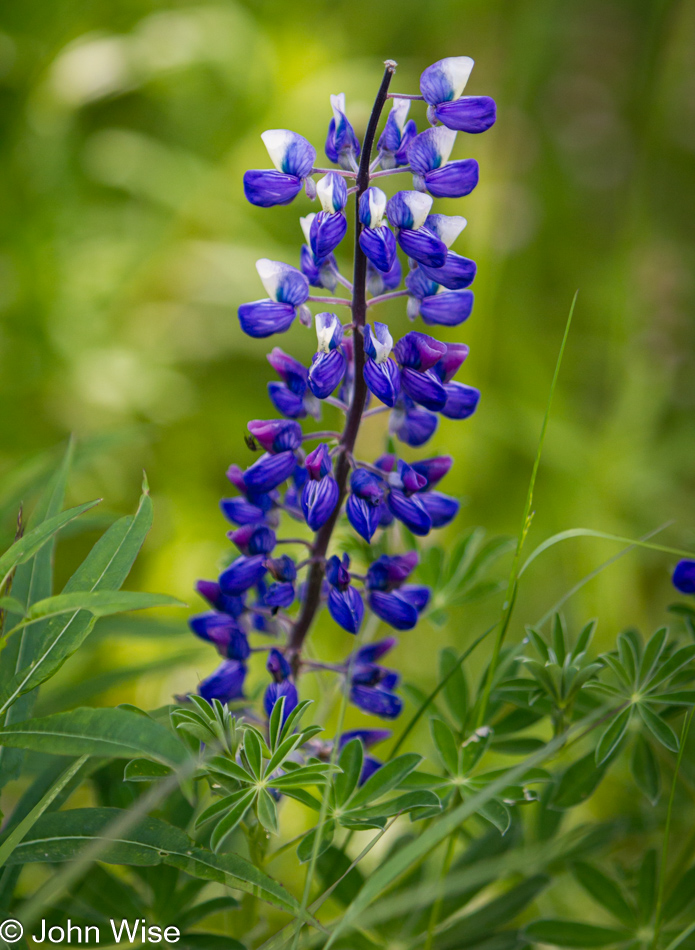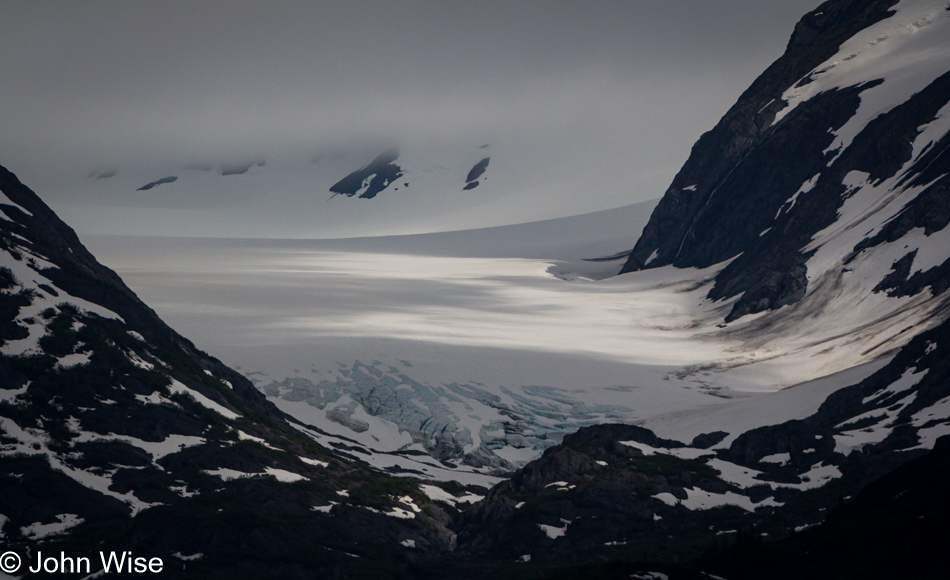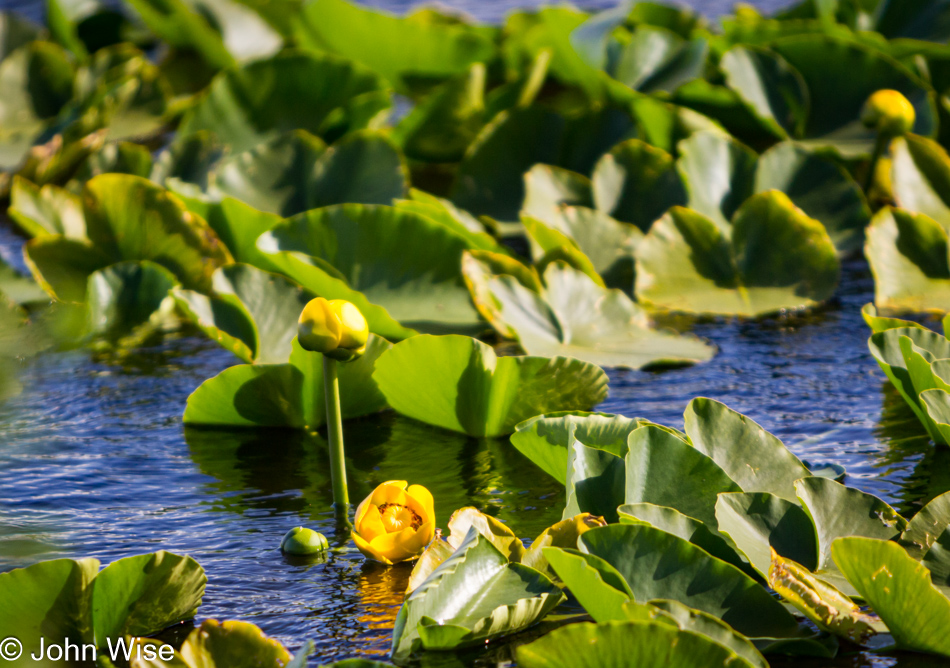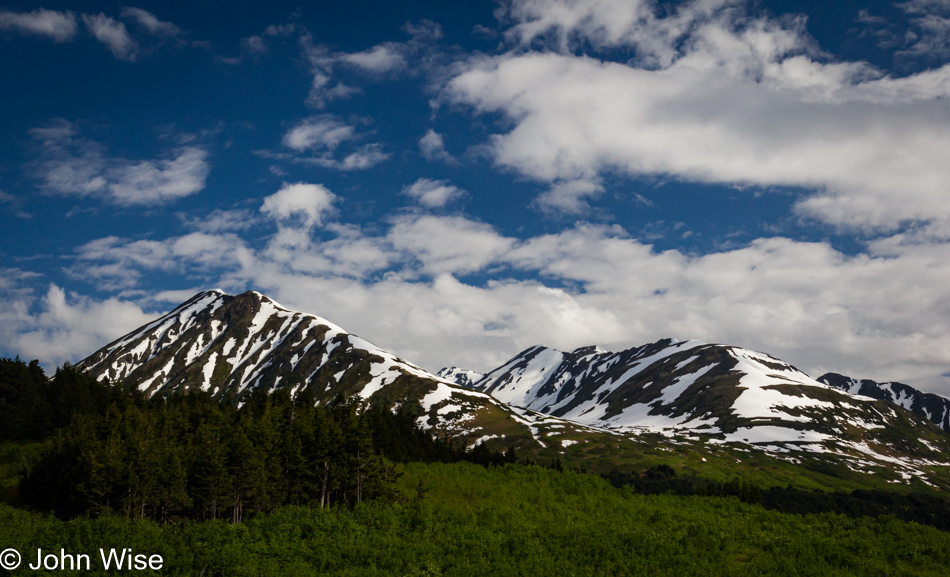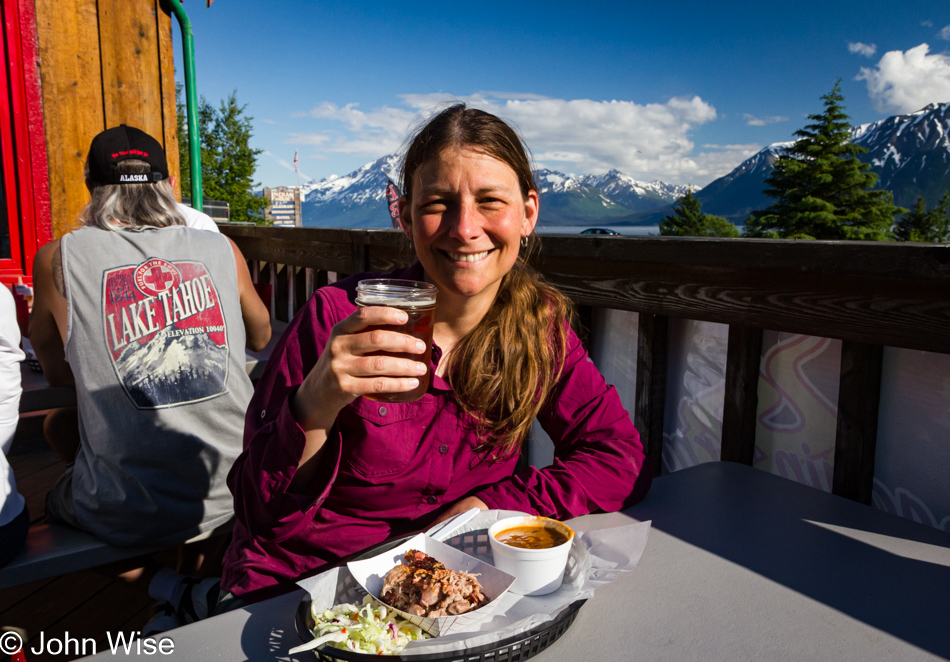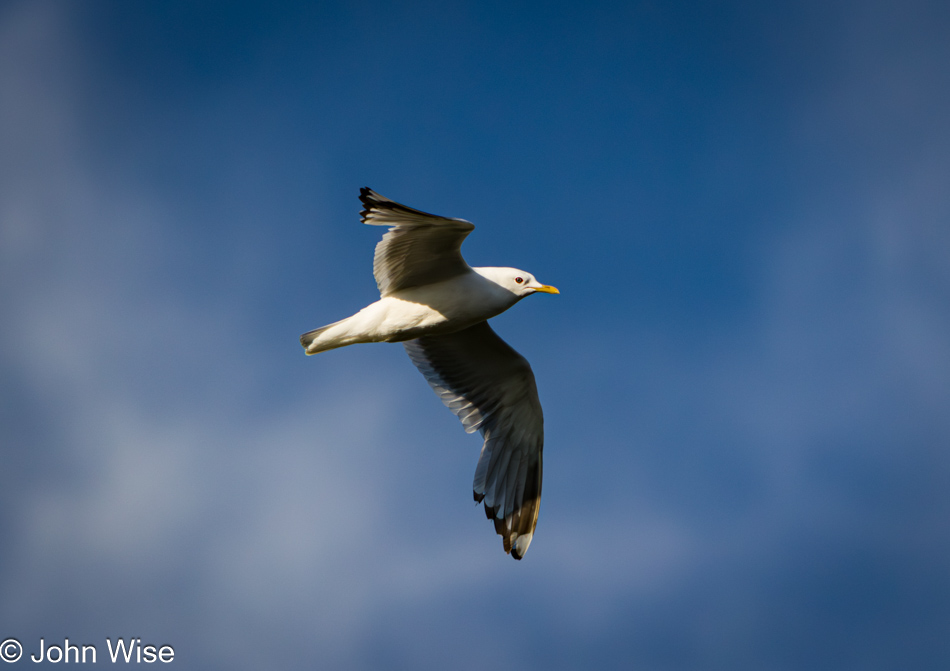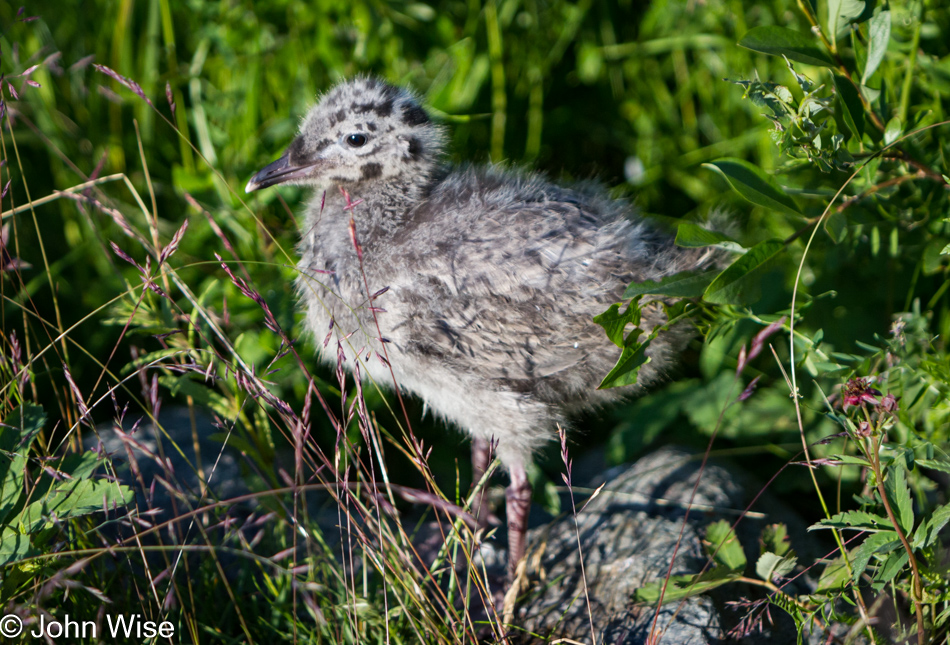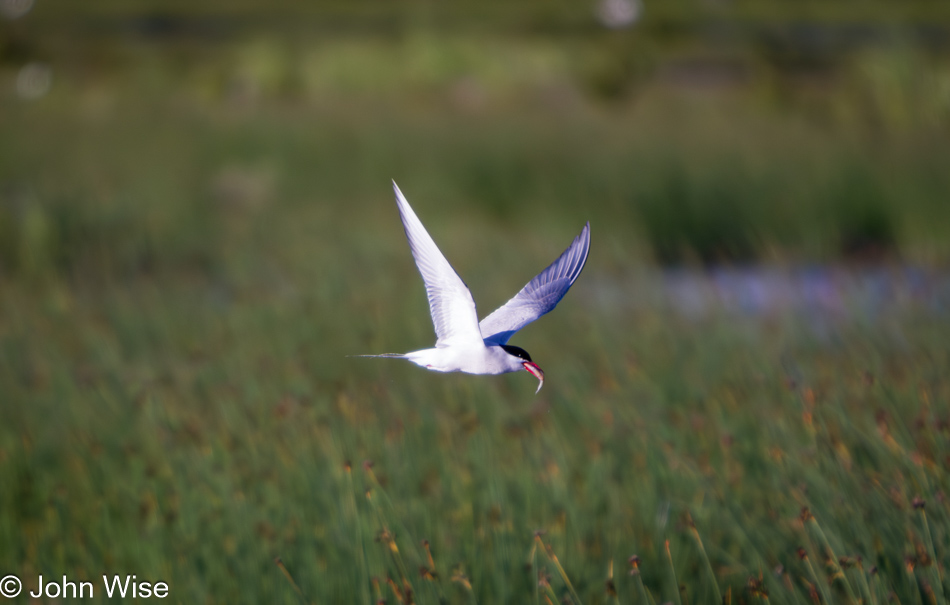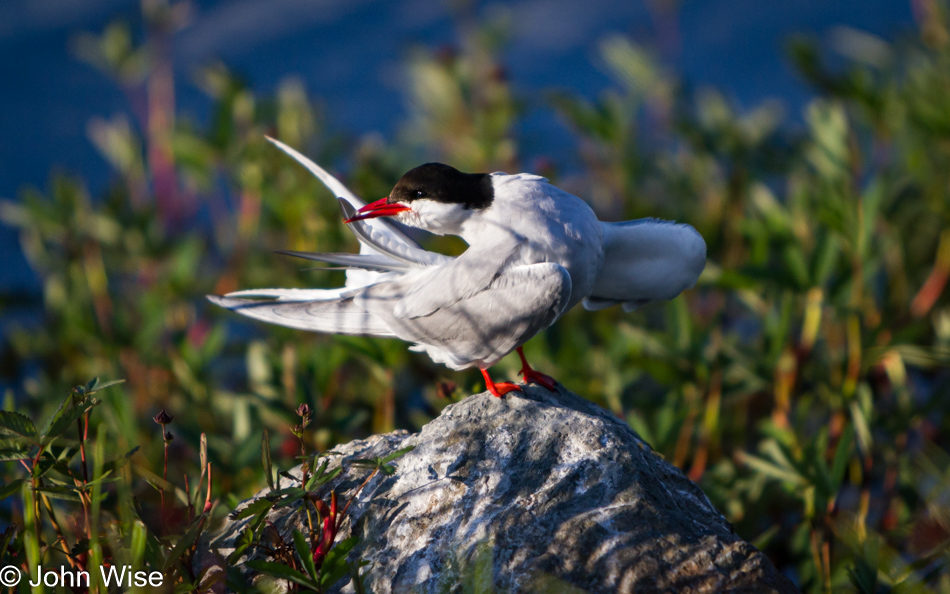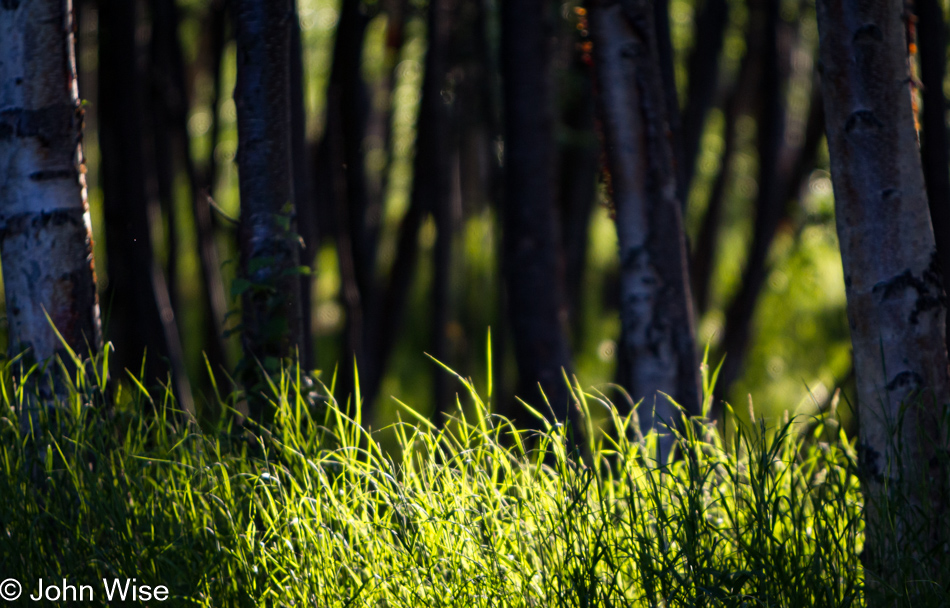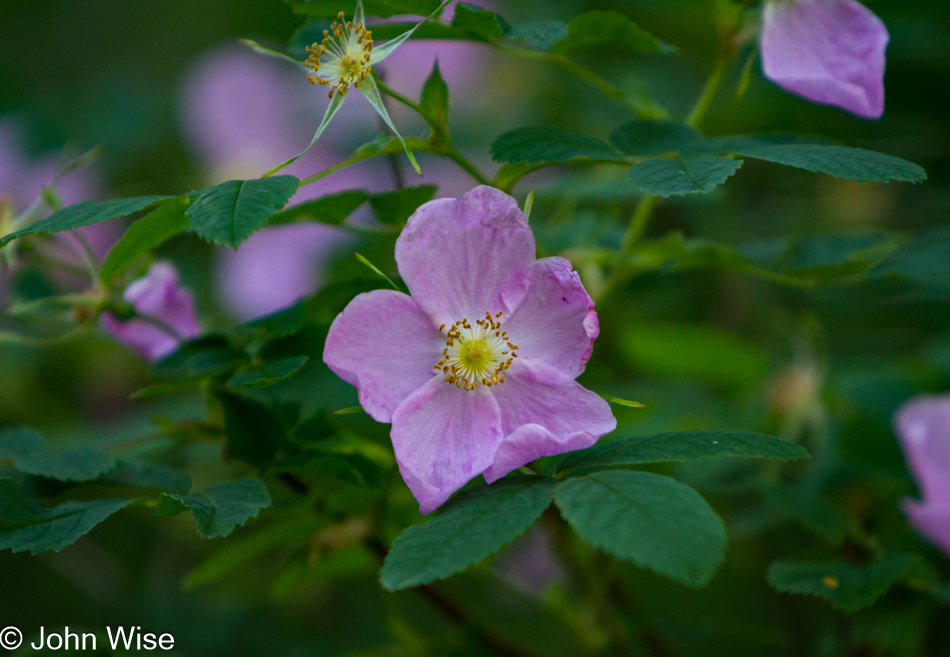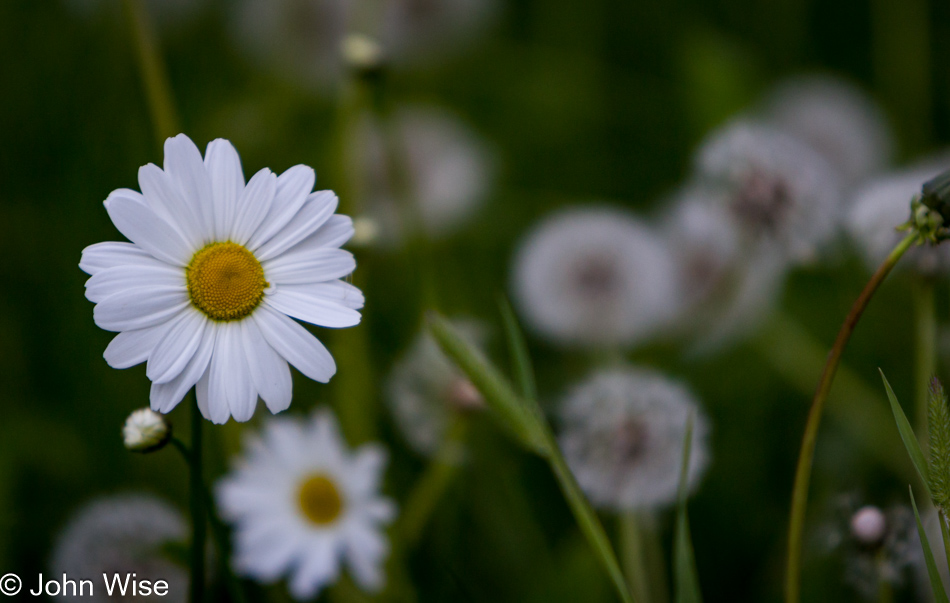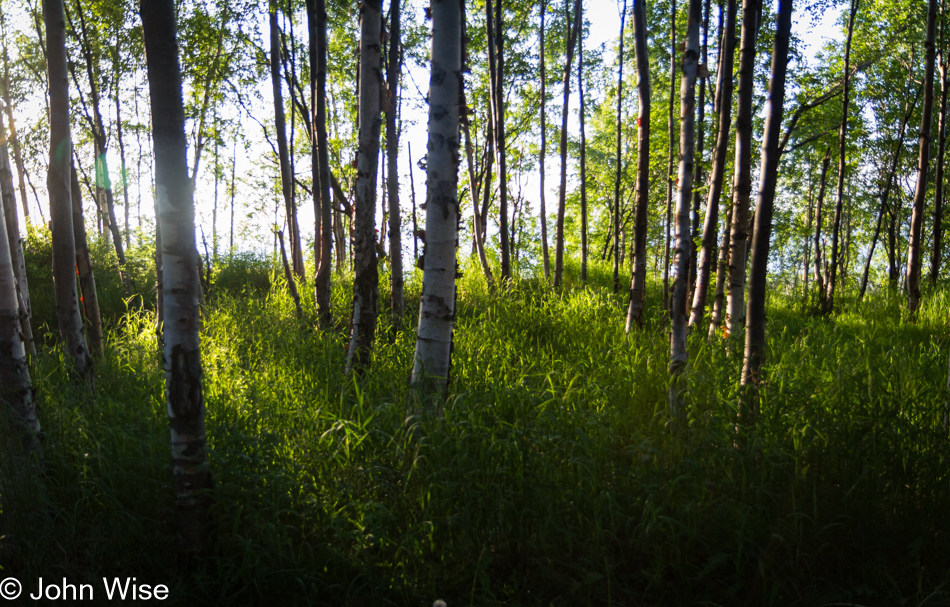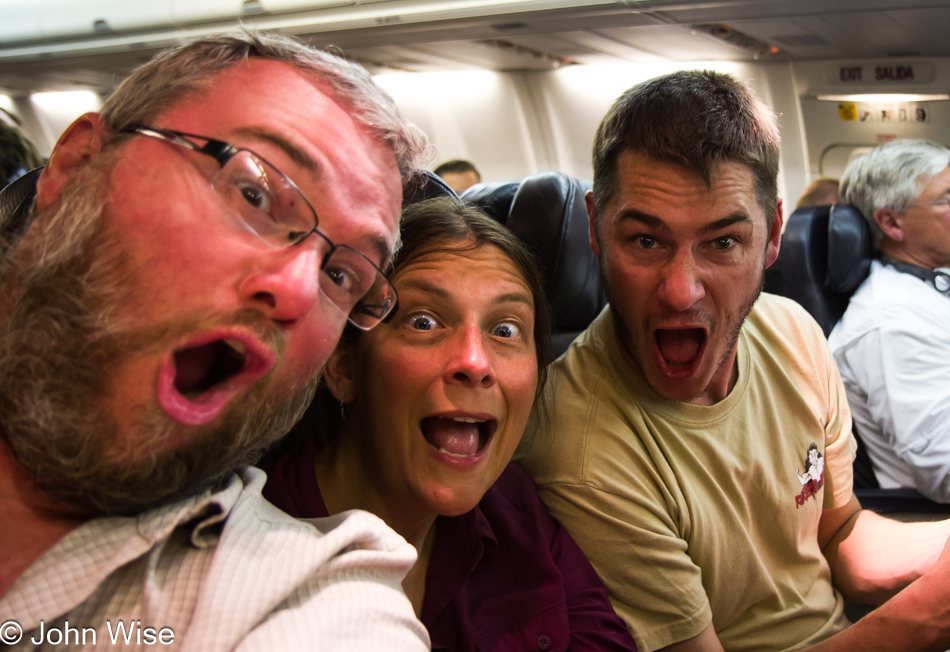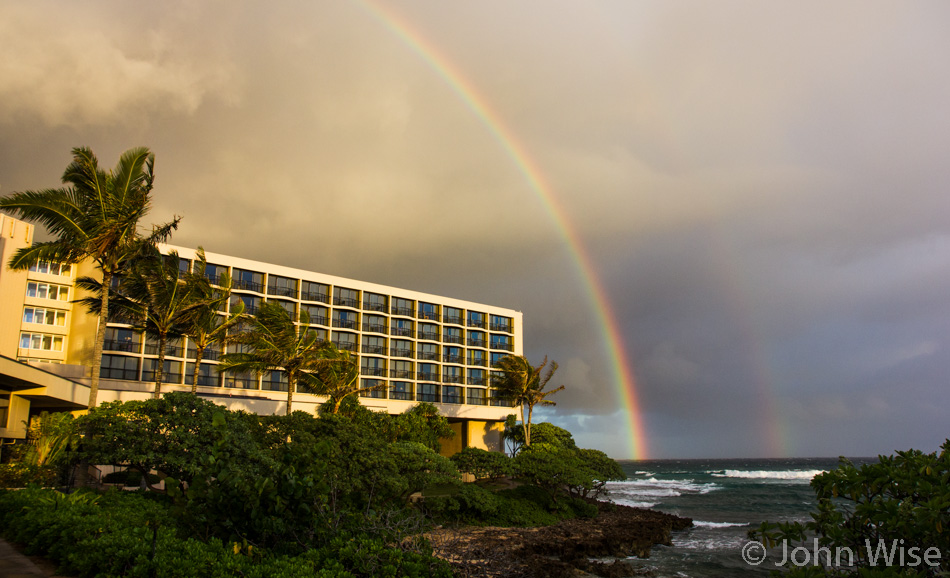
Our last day on O’ahu greets us with a double rainbow.
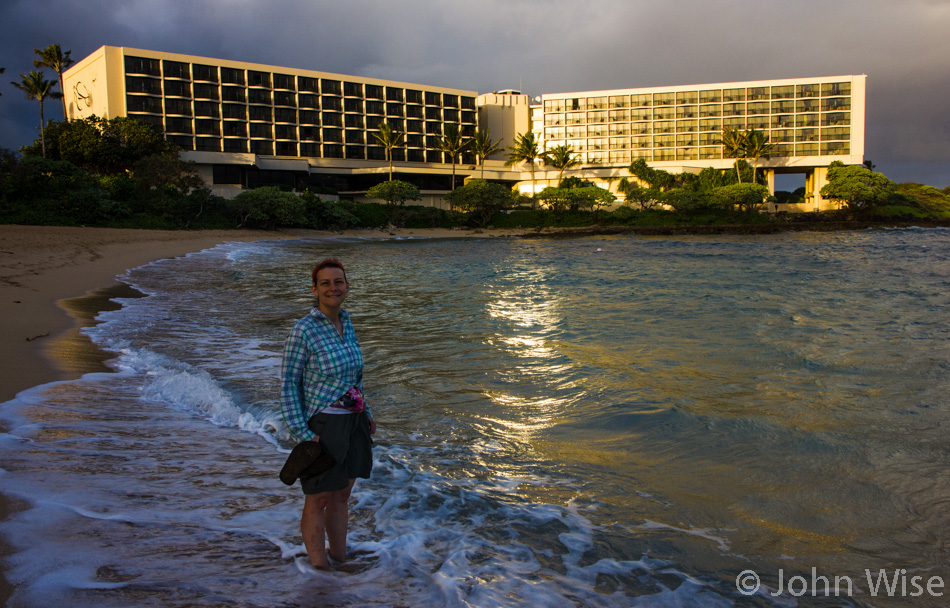
We were up early for the sunrise and a walk in the surf. We can’t quite see the sun yet, but its reflection off the hotel glistens on the water, and soon, we, too, will emerge from the shadows. Along with the light, our hunger arrives, dragging us towards Sunset Beach with a stop at the farm stand we’ve been visiting nearly every day to stock up on pineapple and coconut to accompany our bananas: the breakfast of paradise.
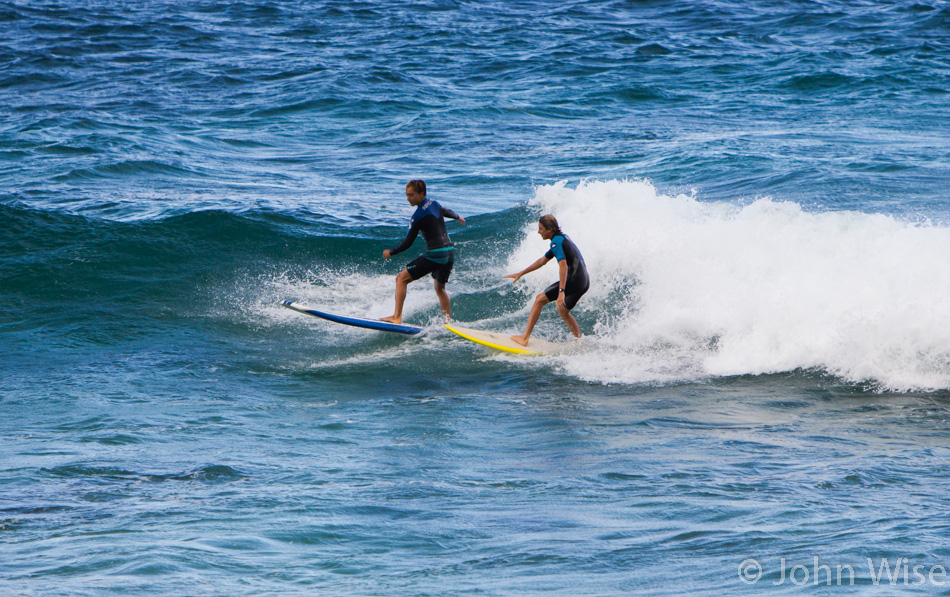
Maybe the Pipeline Surf Championship is over because there are hardly any cars here this morning, and it looks like the stands are being taken down. With this abundance of parking, we stop for a while to check out those who are out on these pristine waters. These two guys above are on about their 10th attempt of getting on their boards at the right moment, getting close enough to perform the trick they are attempting and make the leap to execute it.
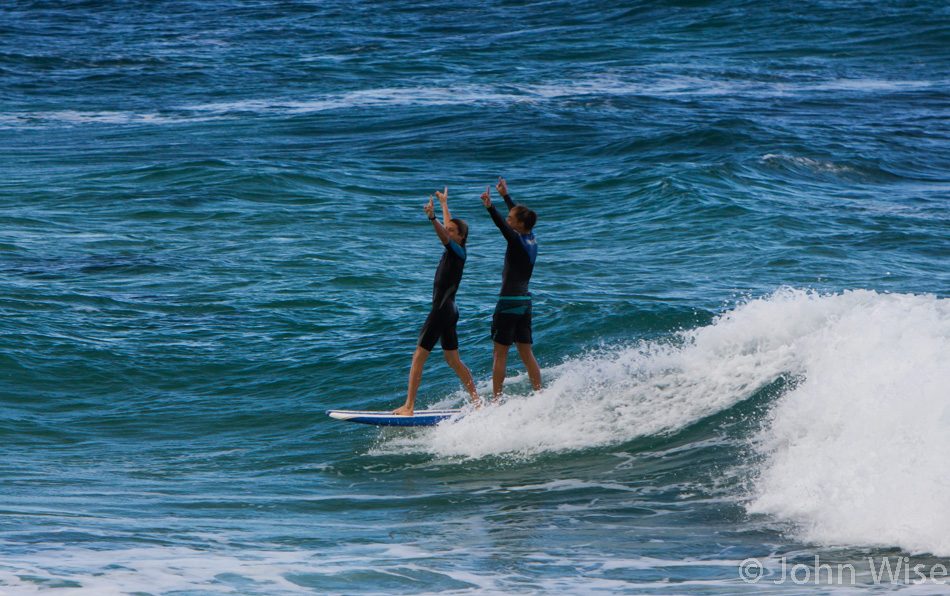
Blam…..they nailed it and threw their hands in the air in celebration
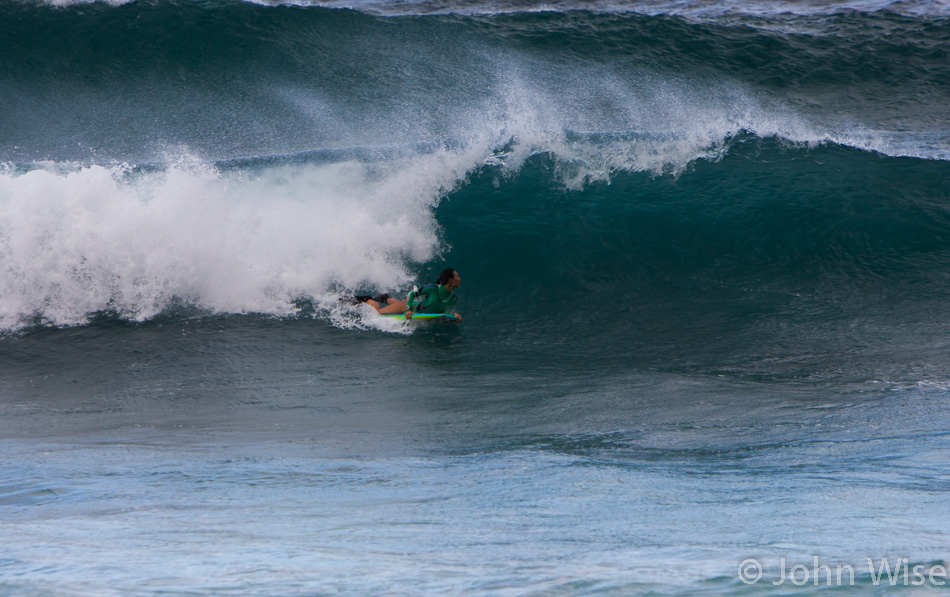
While the guys were trying to surf two to a board, a young woman had paddled out with her bodyboard and proceeded to power shred these waves with some gnarly spins and serious strength on display. Two boys, maybe about eight years old, were the next to join the others out on the water. After paddling out, they proved their mettle and surfed the Pipeline like seasoned pros; those kids have sand!
Okay, enough of playing the observer; time to get back out there as we are prodded by the rain that comes rolling in. Oh yeah, we changed our mind about the drive west and have turned around to go south.
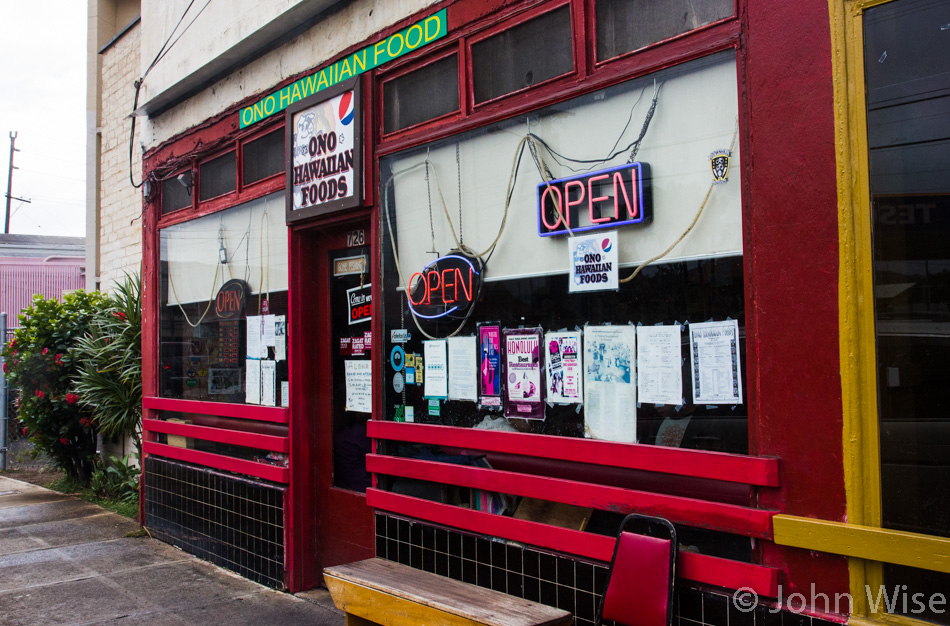
Where is the day going? It’s almost noon as we leave the Pali Highway to enter Honolulu, and wouldn’t you know it, it’s lunchtime, and we have an appetite. Where else would we go but back to Ono Hawaiian Foods Cafe, where we ate after we landed in Hawaii last Thursday, and seeing it’s Sunday we’ll just call this church.
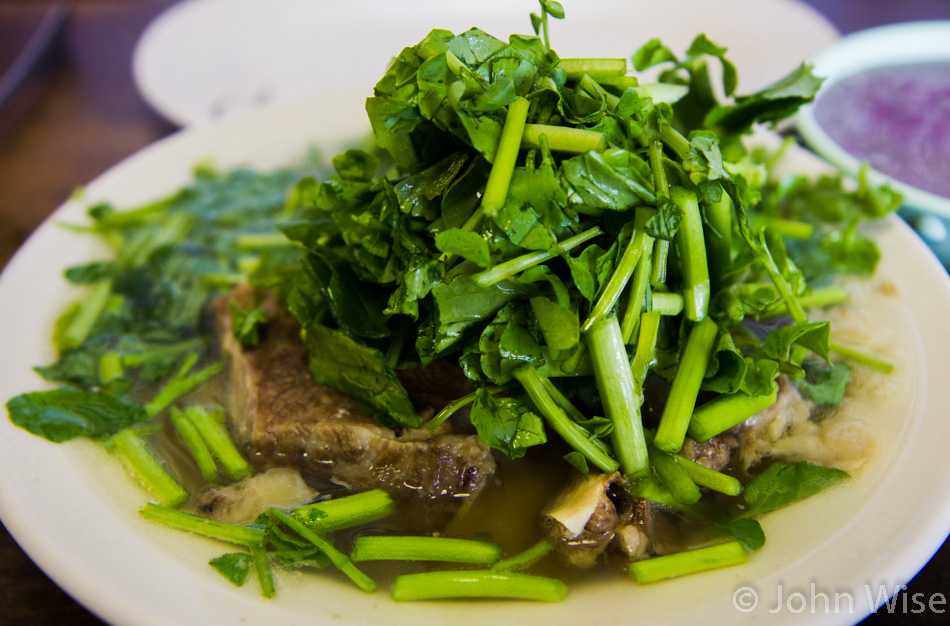
Our feast consisted of poi, Portuguese sausage, salt meat, and watercress, along with some lau lau, which, as a reminder, is pork wrapped in taro leaf. Dessert was haupia with some extra haupia. I’ll explain: as we sat there stuffed and very satisfied at the end of this culinary orgy, the owner brought us another portion of haupia. We tried waving him off, explaining someone else had already delivered our haupia, to which he replied, “You’re doing just fine.” We shut up and ate up.
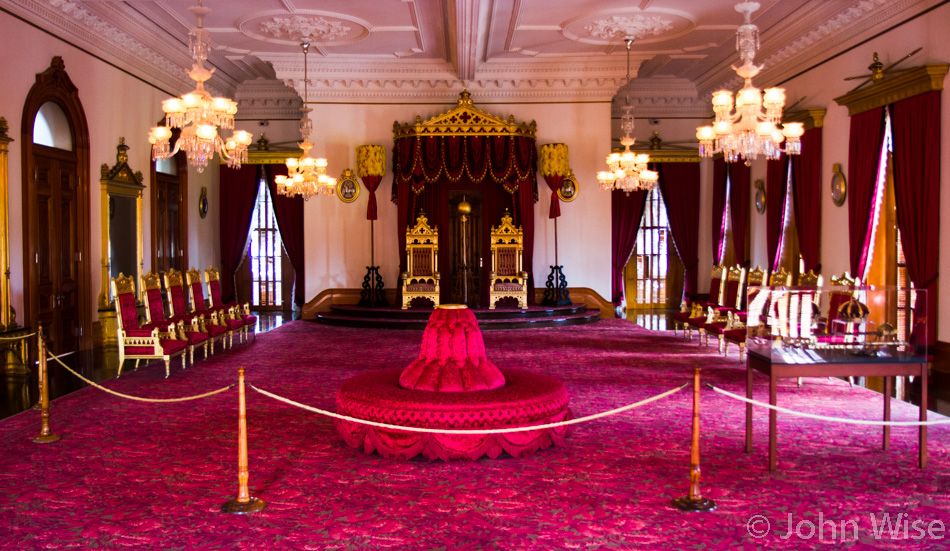
Honolulu has a traffic density that compares to the worst of Los Angeles. It took us one hour to drive less than 10 miles, and when we arrived at our destination, it was raining hard. So it goes regarding the rain, though, as it has rained off and on every day we’ve been here. Once parked in a garage, we quickly pay for our entry into Iolani Palace, home of the last of the Hawaiian monarchy.
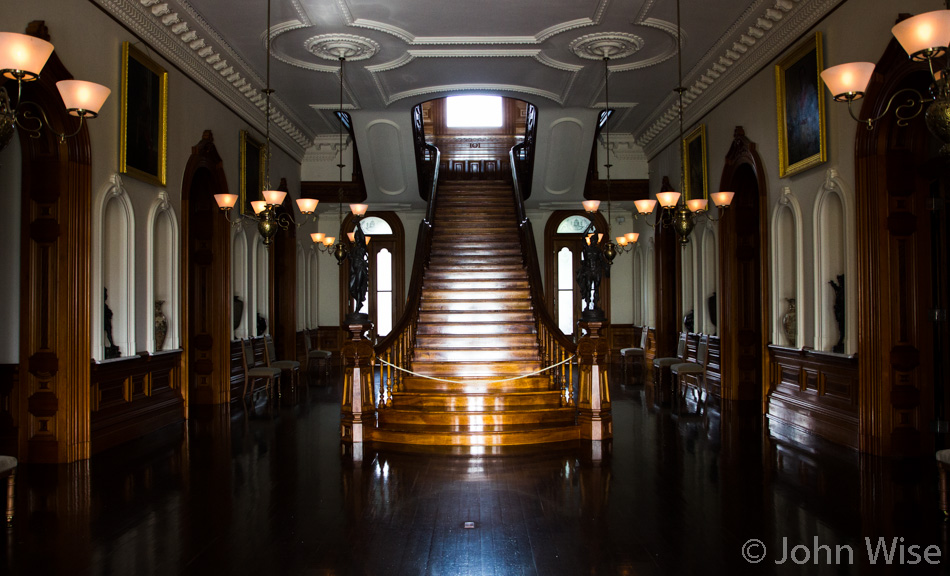
What a giant tragic mess this building represents. On one hand, it was the royal home after its completion in 1882, but within about a dozen years, it became the prison of Queen Lili’uokalani, who was the last monarch to ever oversee the islands. Contact with the West proved fatal for Hawaiian autonomy. The laying of the cornerstone of this building and convincing Hawaiian rulers they would be taken more seriously if they could entertain dignitaries in a palace was likely a ruse to start gaining the trust of those in government.
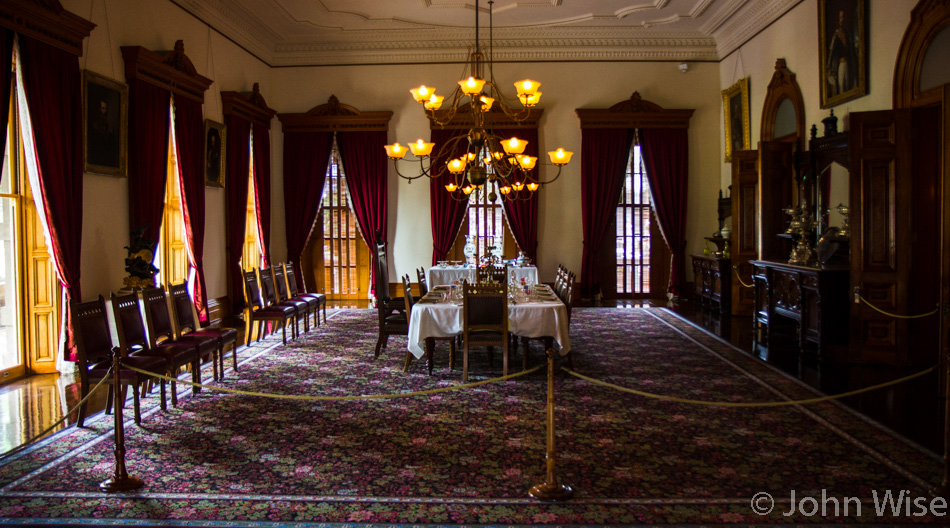
With America becoming entrenched in the affairs of the islands, it was likely already well thought out that when those loyal to the U.S. mainland made their move against the monarchy, the troops would move in from offshore to raise the American flag. From that point forward, it was only a matter of time before this territory would become a state, and the Hawaiian people would lose their lands.
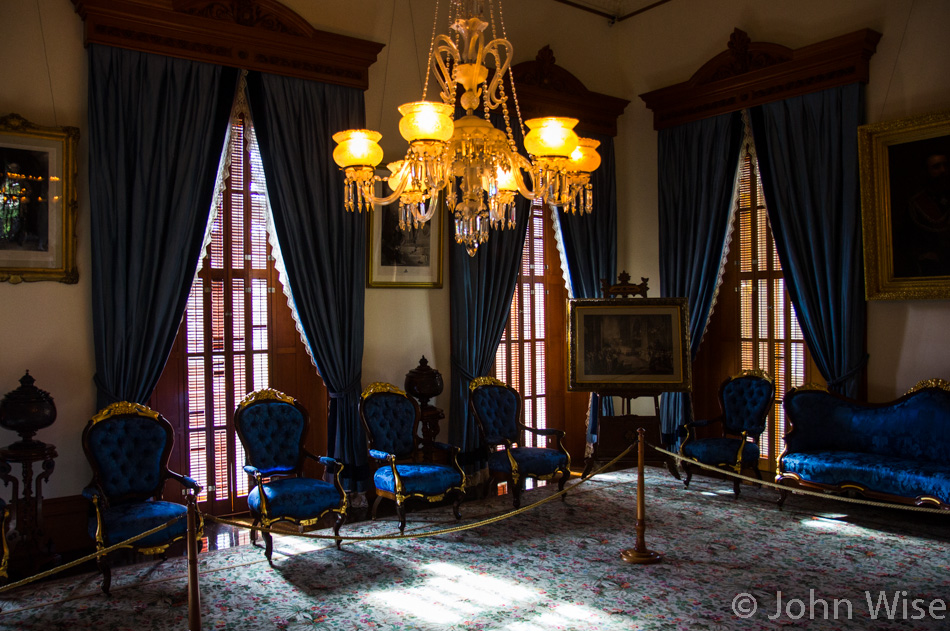
Now, we are supposed to visit this palace and marvel at the modern Western-centric monarchy that is being romanticized into something that only happened due to them allowing us onshore. America’s history is, in large part, built on the displacement of native peoples from both their lands and culture. Shortly before Hawaii fell fully into American hands, the Dawes Act of 1887 authorized the federal government to break up reservations in an effort to bring Native Americans into mainstream U.S. society in order to assimilate them and destroy their cultural and social traditions. For over 100 years, right up until 2007, we were still forcing Native American children into boarding schools in the continuing effort to “Kill the Indian to save the man.” This policy didn’t have so much to do with the fact that they were Indians, but that the ruling dominant culture saw them as indigenous primitives it could equate with animals, just as we appeared to be doing with Hawaiians.
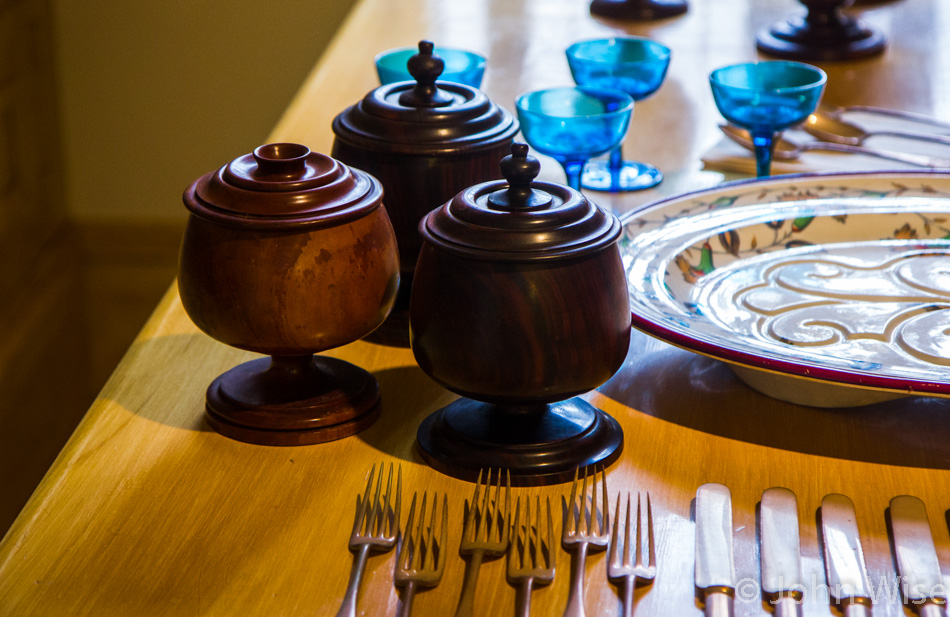
You can visit every room in the palace and never feel that you’ve seen anything of Hawaiian origin or culture. We visitors to Hawaii then fool ourselves into believing that a visit to a beach, snorkeling, attending a luau at a resort, or donning a lei put on us by a Hawaiian at the airport upon our arrival is immersing us in Hawaiian culture. We are idiots buying a fantasy TV version of reality that has been candy-coated. Don’t get me wrong, I love the scenery and the tropical paradise of this environment, but whatever Hawaii once was is mostly gone now, and it’s a tragedy.
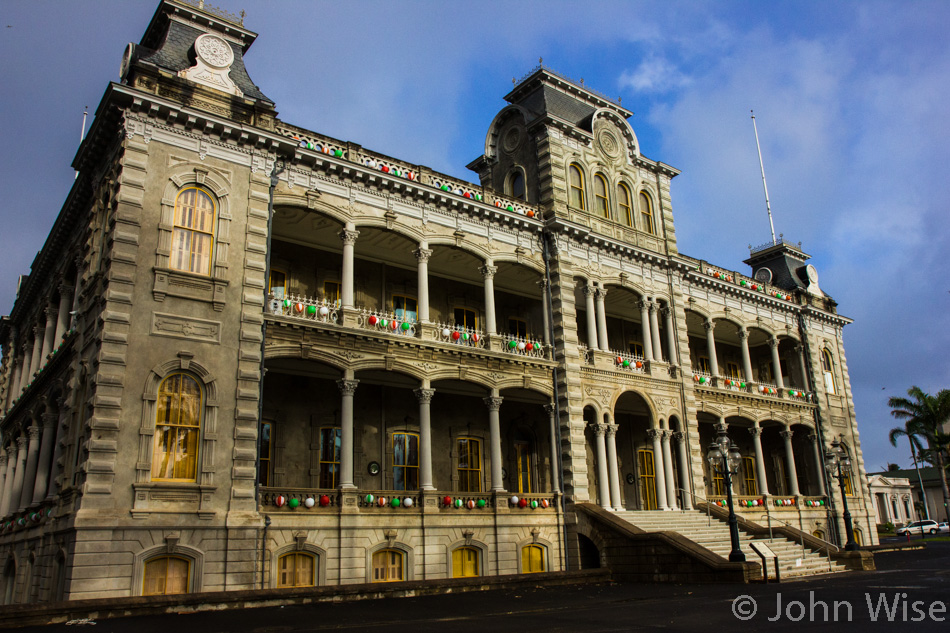
This is not the face of Hawaii; it is the facade of domination and conquest. It is effectively a grave.
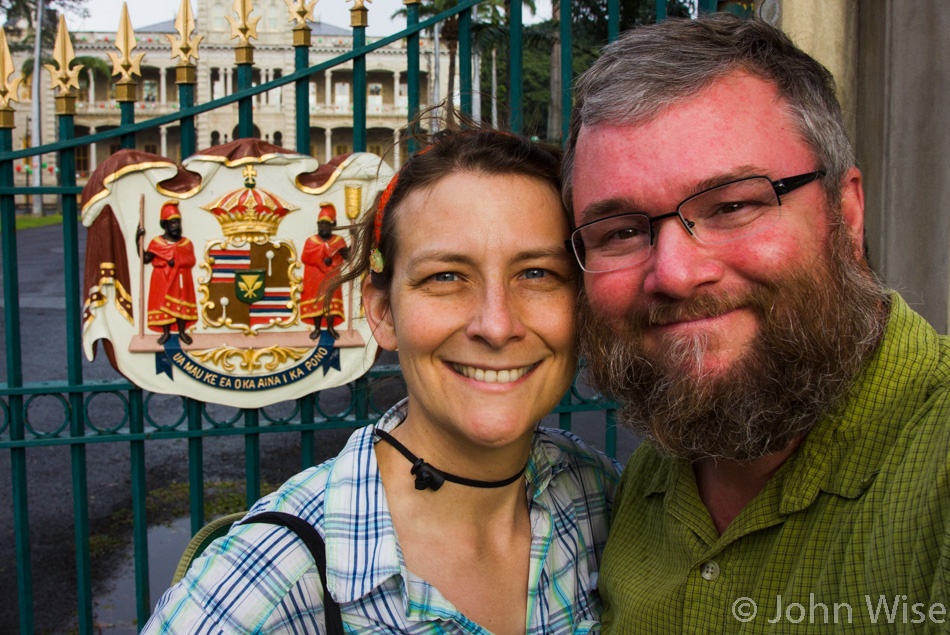
O’ahu has proven to be educational, romantic, beautiful, and mostly fun. The conflict that exists within me regards the misconceptions that are allowed and encouraged to remain dominant is why I have to qualify that this has been “mostly” fun. It would be far too callous to dance on the graves of a culture and never pay respect to what one’s ancestors had to pay in order to just survive. Yet here I am today, trying to reconcile within myself how I can wear a smile knowing the truth.
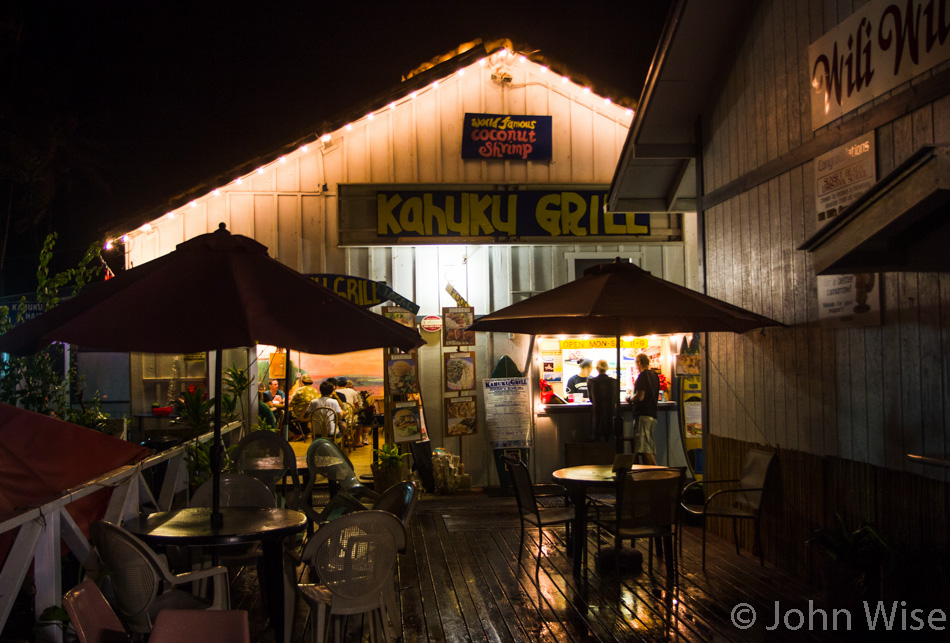
Grilled pineapple and jalapenos on a burger never tasted so good as they do here in Hawaii, so a third and final visit to the Kahuku Grill felt in order before returning to the hotel for a swim and some writing.
